

MONSOON MAGIC IN GOA
Why Rainy Season is the New Peak Season







“Goa, Like You've Never Seen Before.”
Beyond beaches. Beyond clichés. Your real Goan journey begins here
COMING SOON
The ultimate travel guide that's made in Goa, for the world.


BY THE SAL Dining at The Fisherman's Wharf, Goa's Quintessential
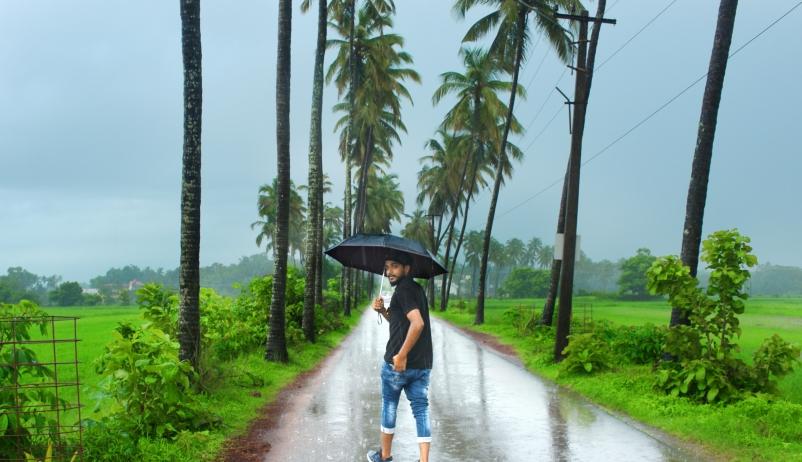


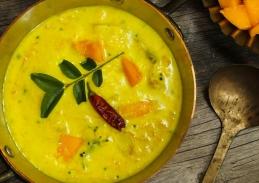

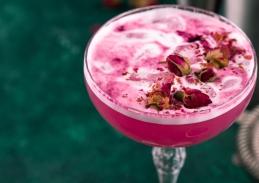

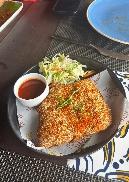

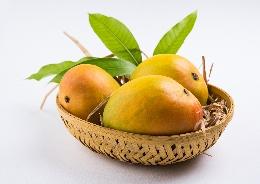


ADITI MALHOTRA MANAGING EDITOR
LEARNING TO SLOW DOWN, ONE SEASON AT A TIME
Hello, dear readers!
There is something about this time of year that feels like a gentle nudge. Not quite the peak of summer, not fully into the monsoon rhythm, just that in-between phase where the days are long, the nights are slow, and life asks you to take a deep breath.
Maybe it is the way fruit finds its way into every meal, or the way we instinctively lean toward lighter food, colder drinks, and breezier clothes. Or maybe it's that quiet shift in our pace. We stop to sip our iced coffee instead of gulping it down. We find ourselves stepping outside after dinner, letting the air touch our skin. There is something healing about the slowness that creeps into our routines, if we allow it.
In the food and hospitality world, this season is almost like a palate cleanser Restaurants recalibrate, home kitchens experiment with fresh ingredients, and menus shift to reflect not just what's available, but what we feel like eating. We are less in a rush to impress and more in tune with comfort, with nourishment, and with moments that are best enjoyed unhurried.
Maybe this is the reminder we all needed, that celebration isn’t always loud. It is often tucked inside small things. A chilled bowl of something tangy. A recipe scribbled and stuck on the fridge. A quiet meal with someone you love. Or even a solo sunset watched from your balcony.
Here’s to the in-between days. To eat with the seasons, listening to your body, and savouring the present, bite by bite, breath by breath.
Until next time,
Cheers
With love and light,
Aditi
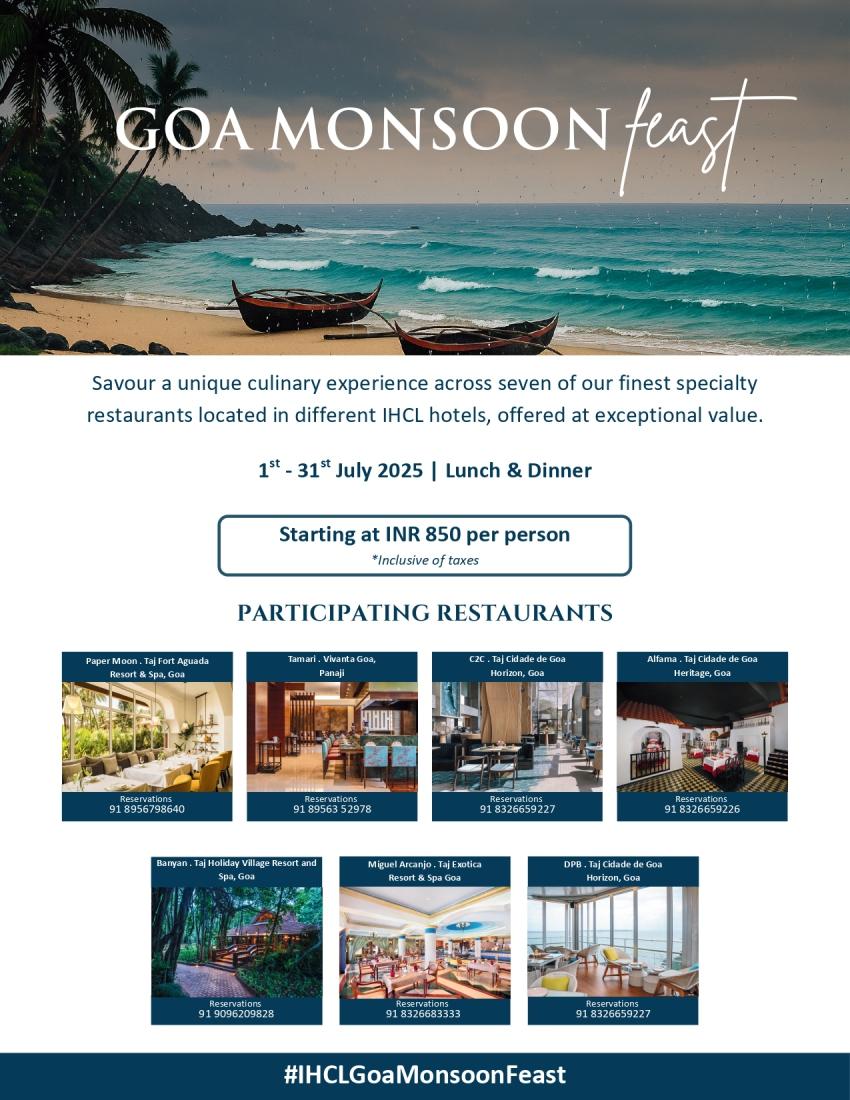
THE TEAM

Editor in Chief & Publisher
Rajesh Ghadge rajesh@rajeshghadge.com
Managing Editor
Aditi Malhotra aditi@foodandhospitality.org
Contributors
Sunil Malhotra
Armaan Malhotra
Aakash Ghadge
Gauri Ghadge
Niharika Sachdeva
Saloni Pai
Design & Layouts
GPDM - A Media Company info@goaprism.com
Photography
Tanmayee Masurkar
Gauri Ghadge
Aakash Ghadge
EDITORIAL OFFICES
2nd Floor, Udyog Bhavan, Opp Azad Maidan, Panaji,Goa-403001
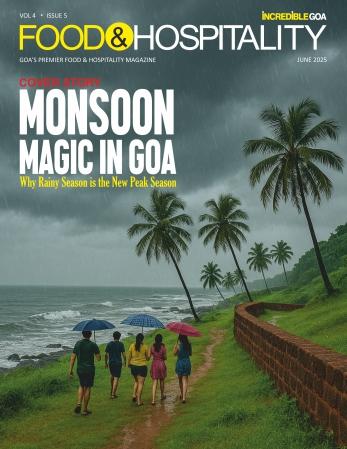
2nd Floor, Udyog Bhavan, Opp Azad Maidan, Panaji,Goa-403001 +91 8999085172 | info@foodandhospitality.org

SUBSCRIPTIONS & ADVERTISEMENTS
+91 8999085172 | info@foodandhospitality.org
The Magazine is Published by GOA PRISM DIGITAL MEDIA Rajesh Ghadge, RNI - GOAENG/2020/00441 www.fnhmag.com
2nd Floor, Udyog Bhavan, Opp Azad Maidan, Panaji,Goa-403001
Cover Photo Credits Image by Freepik Stock Images Credits Rajat Prabhu
@thedarkphoenixstudio


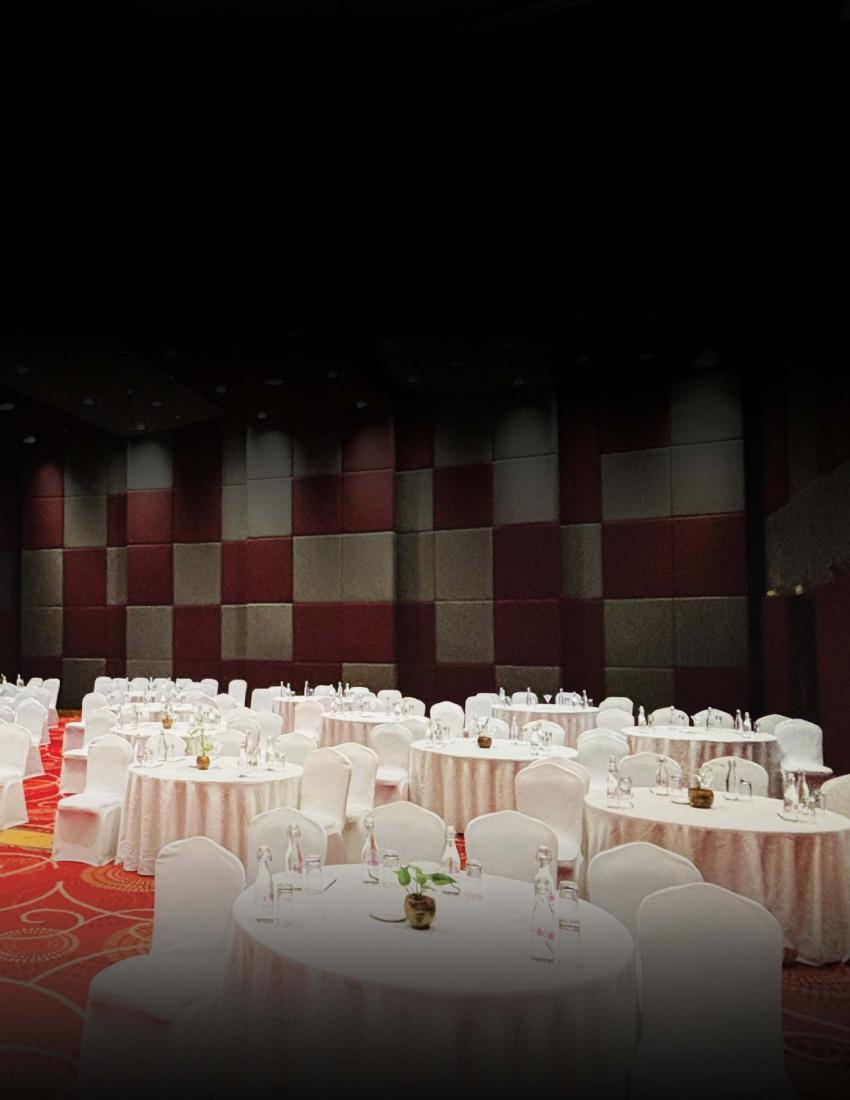




ROOTED IN PURPOSE
Marriott India Leads the Way with 100,000Trees Planted on World Environment Day 2025

In a bold affirmation of sustainability and social responsibility, Marriott India marked World Environment Day 2025 with an awe-inspiring milestone—planting 100,000 trees across the country. Spanning more than 150 hotels and involving over 15,000 volunteers, this nationwide initiative not only highlights Marriott's unwavering commitment to the planet but also underscores its leadership in ushering a greener, more conscious era of hospitality.
FROM CAMPAIGN TO MOVEMENT: SCALING UP “TWO TREES PER ROOM”
This remarkable achievement stems from the momentum created in 2024, when Marriott India first launched its “Two Trees per Room” campaign. That initial drive saw 32,600 trees planted by close to 5,000 volunteers—an impressive feat that laid the groundwork for an even more ambitious undertaking this year.
Fast-forward to 2025, and Marriott has more than tripled that effort, proving that impactful sustainability is possible when corporate vision aligns with grassroots action. Each hotel took
ownership of the green mission, turning a unified national pledge into locally driven, hands-on environmental action.
LOCAL
ROOTS, NATIONAL REACH
What made the 2025 campaign stand out was its deep focus on local relevance. Every Marriott property—from coastal retreats to urban hubs executed tree-planting drives in collaboration with trusted environmental NGOs and reforestation experts. The locations chosen were ecologically strategic—urban parks, degraded lands, watershed zones, and community green spaces—ensuring that the initiative contributed to biodiversity conservation, rewilding, and urban cooling.
More than just restoring green cover, the initiative provided employment in rural areas, supported local nurseries, and fostered community engagement, adding socio-economic value alongside environmental benefits.
SPOTLIGHT ON GOA: COURTYARD BY MARRIOTT COLVA STEPS UP
One of the most inspiring examples of localized impact came from Goa, where Courtyard by Marriott Goa Colva planted 360 trees around its premises. Hotel Manager Sameer Kapoor led the initiative with heartfelt passion, ensuring that it wasn't just a CSR activity, but a community-building exercise. Every department participated—housekeeping, kitchen, front office, and management—showing that sustainability is truly everyone's job. “Each tree we planted is a promise to future generations,” said Kapoor, adding a personal touch to what became a memorable event for staff and guests alike.
A GREEN VISION BEYOND A SINGLE DAY
Marriott's commitment doesn't end with a single event. Across India, its hotels are integrating sustainability into daily operations. From smart energy systems and water-saving technology to plastic-free initiatives and ethical sourcing, Marriott is embedding eco-consciousness into its DNA.
These efforts aren't just part of annual reports they're shaping guest experiences, training programs, and long-term strategies. Guests checking in are increasingly welcomed not just with comfort, but with a sense of purpose.
REDEFINING HOSPITALITY, ONE TREE AT A TIME
In a world where sustainability is often reduced to rhetoric, Marriott India's World Environment Day 2025 campaign stands as a benchmark of real, measurable impact. Planting 100,000 trees is not only a bold environmental step—it's a declaration that the hospitality industry can, and must, lead the charge toward a more responsible future.
As India's hotel sector evolves, Marriott is setting the tone: green is not a marketing angle—it's a mission.
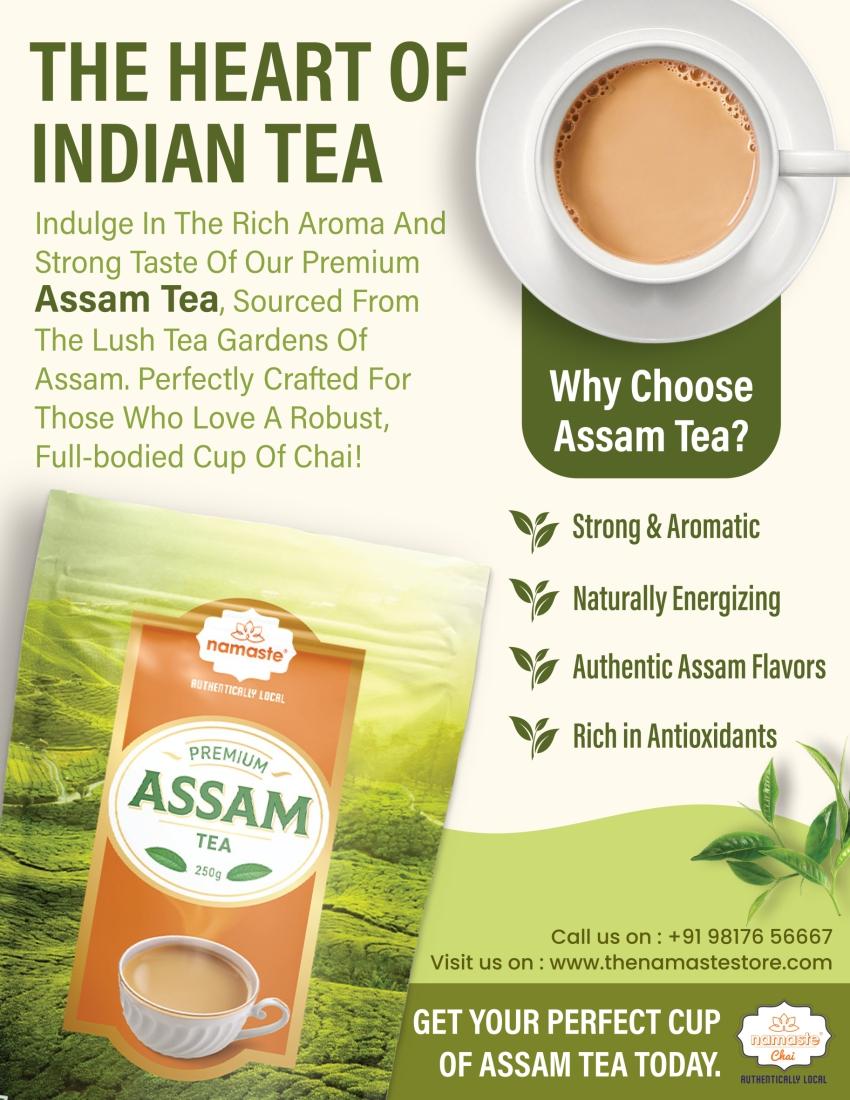
The Goa Monsoon Feast: IHCL Unites Goa's Finest Restaurants for a Culinary Celebration Like No
Other THE GOA MONSOON FEAST

This July, the monsoon showers do more than just drench Goa in beauty—they stir up a celebration of flavour across the state's most iconic dining destinations. For the first time ever, Indian Hotels Company Limited (IHCL) is bringing together seven of its most celebrated specialty restaurants under one umbrella for The Goa Monsoon Feast — a limited-time, prix fixe dining experience that promises refined indulgence, seasonal soul food, and unmatched value.
Running from 1st to 31st July 2025, this month-long showcase spans properties across Taj and Vivanta hotels in Goa, each offering specially curated 2, 3, and 4-course menus crafted for the rains. From vibrant Thai curries to heartwarming GoanPortuguese favourites and rustic Italian classics, every dish reflects the season ' s mood warm, comforting, and unforgettable.
A FIRST-OF-ITS-KIND SEASONAL SHOWCASE
At the heart of The Goa Monsoon Feast is a simple but powerful idea: to offer guests a chance to experience IHCL's premium culinary destinations through an accessible, thoughtfully priced format — with no à la carte confusion or fine print.
Each course has been carefully curated to reflect both the restaurant's unique character and the richness of the Goan monsoon. Expect well-balanced, beautifully plated meals that tell a story — one rooted in place, season, and heritage.
PARTICIPATING RESTAURANTS AT A GLANCE
Tamari, Vivanta Goa, Panaji – Urban sophistication meets East Asian delicacies
Alfama, Taj Cidade de Goa –
D o n a P a u l a – A G o a nPortuguese love letter in slow food form
C2C & DPB, Taj Cidade de Goa – Vainguinim Beach –Fresh coastal flavours, crafted for the view
Banyan Tree, Taj Holiday Village, Candolim – Refined Thai cuisine under a 300-yearold banyan
P a p e r M o o n , Ta j F o r t Aguada, Sinquerim – Honest, high-style Italian fare by the sea
Miguel Arcanjo, Taj Exotica, Benaulim – A tribute to Goan c u l i n a r y h e r i t a g e w i t h European finesse
With limited seatings, exclusive menus, and surprise inclusions that vary across venues, the Goa Monsoon Feast offers a rare opportunity to experience IHCL's signature hospitality in an entirely new light.
A WORD FROM THE VISIONARY
Speaking about the initiative, Mr. Ranjit Phillipose, Senior Vice President – IHCL Goa, shared:
“At IHCL, we have always believed that luxury should feel personal, inclusive and rooted in the spirit of the place. This monsoon, we are delighted to invite our guests to experience our signature restaurants like never before — with menus designed for the season, served with warmth, and offered at exceptional value.”
A TASTE OF RAINY DAY ROMANCE
Imagine dining at Miguel Arcanjo as the rain lashes against the colonial windows, or sipping a Whispers of Dona Paula cocktail at the rooftop bar while waves crash in the distance. Whether you're a local gourmand, a visiting traveller, or someone simply seeking joy in the everyday, this festival brings the best of Goa's hospitality into the spotlight — minus the exclusivity and high prices.
With seats filling fast and menus that change with the rhythm of the rain, reservations are highly recommended. Because moments like these don't come twice — and neither do experiences as flavourful as this.
This July, dine with the rains. Only with IHCL Goa.


Copperleaf's Corporate Dining Experience Redefines Success in Goa WHERE BUSINESS MEETS FLAVOR
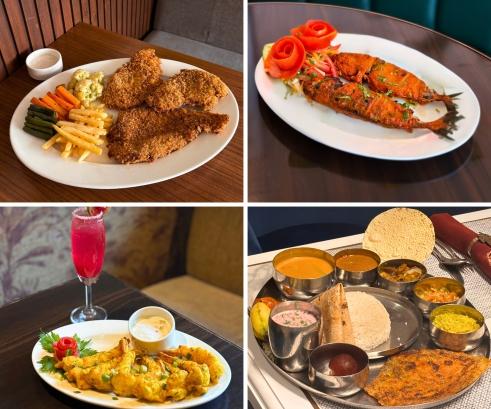
In Goa's evolving fine-dining landscape, Copperleaf stands tall not just for its rich culinary repertoire but for the values it serves alongside every meal — recognition, reward, and real connection. With two premium locations in Porvorim and Panaji, Copperleaf has become a trusted name for those who value authenticity, elegance, and excellence on the plate. But beyond its acclaimed Indian, Goan, Tandoori, and Chinese cuisine, it's the brand's thoughtful corporate engagement that's creating waves in Goa's professional circles.
CELEBRATING EVERY MILESTONE, ONE MEAL AT A TIME
Copperleaf's belief is simple: every achievement tastes better when shared. And with this in mind, the restaurant introduced a visionary initiative — The Copperleaf Corporate Discount Program, launched in 2022 Aimed at celebrating the accomplishments of working professionals, the program offers exclusive discounts across dine-in, delivery, and takeaway, making it easier for professionals and their families to enjoy premium hospitality, even in the midst of busy schedules.
What sets this initiative apart is its inclusivity — benefits are not limited to the employee alone, but extend to their families, turning everyday dining into a memorable celebration.
TRUSTED BY GOA'S MOST RESPECTED WORKPLACES
The list of organizations partnered with Copperleaf is
impressive, spanning industries like banking, IT, pharma, hospitality, manufacturing, and public sector undertakings. Among them:
State Bank of India, Reserve Bank of India, ICICI Bank, Canara Bank, Bank of Baroda, NABARD, Sanofi, Unichem, Siemens, Deltin Corp, Vedanta, GMR, Kineco Kaman, BNI, Tangentia, Open Destinations, GEL, Centaur Pharma, Koenig Solutions Pvt Ltd, Big Daddy, Goa Natural Gas, Sai Service, Micro Lab, Group Priority, MARC, Putzmeister, Frontline, PEC Venture, R K Pikale & Co., Lokmanya Multi Corp, NORDIC LLP and many more.
Each partnership signifies trust — not just in Copperleaf's culinary consistency, but in its commitment to honouring the efforts of Goa's workforce.
LOYALTY PROGRAMS THAT SPEAK TO PROFESSIONALS
Copperleaf doesn't stop at corporate d i s c o u n t s . T h e r e s t a u r a n t h a s thoughtfully curated a series of loyalty programs tailored for different communities, including:
Copperleaf Elite Club – For loyal patrons and returning guests
Copperleaf Elite Club Professional Membership –Exclusively for Doctors, Chartered Accountants, Teachers, and Lawyers
Armed Forces Discount Program – A token of gratitude for those who serve the nation
These programs ensure that every guest — whether dining for work or leisure — feels valued, welcomed, and celebrated.
A New Standard in Corporate Dining
Today, corporate dining is more than just a meal; it's a strategic extension of relationship-building, team recognition, and client engagement. Copperleaf understands this deeply. With its warm service, refined ambiance, and tailor-made corporate privileges, the restaurant transforms business meals into unforgettable experiences.
Copperleaf invites businesses across Goa to become part of this rewarding journey. Register your company, unlock exclusive perks, and let your team experience dining where recognition is served — along with exquisite cuisine.
Copperleaf — Where every meeting is meaningful, and every meal, a memory.

“Goa, Like You've Never Seen Before.”

The ultimate travel guide that's made in Goa, for the world
Beyond beaches. Beyond clichés. Your real Goan journey begins here
COMING SOON
THE UGLY DELICIOUS MOVEMENT WHY WE’RE FALLING IN LOVE WITH FLAWED FOOD
By Gauri Ghadge
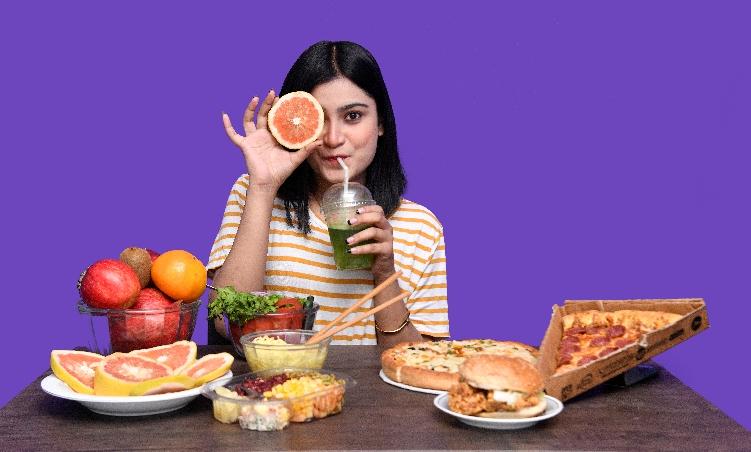
Twisted carrots. Bruised bananas. Tomatoes with sun-kissed scars. Once sidelined as culinary rejects, these imperfect ingredients are now stealing the spotlight. Welcome to the Ugly Delicious Movement, where food’s visual flaws are celebrated, not scorned, and flavour reigns supreme.
THE PERFECTION PROBLEM
For years, the global food system has prioritised appearance over substance. Supermarkets stock only flawless, photogenic produce. Behind this pursuit of symmetry lies a shocking waste: the Food and Agriculture Organisation of the United Nations (FAO) reports that nearly 1.3 billion tonnes of food is wasted globally each year, and a large portion of this is rejected solely
for cosmetic reasons.
In developing countries, between 30–40% of all produce is lost before it even reaches markets, often due to superficial imperfections. While the world battles hunger and climate instability, perfectly edible fruits and vegetables are being discarded simply because they don't look the part. But a powerful counter-movement is rewriting that story, one wonky fruit at a time.
A CULINARY LOGIC ROOTED IN FLAVOUR, NOT FLAWLESSNESS
In the world of cooking, it’s always been about flavour. Traditional recipes across cultures, especially in home kitchens

and community cooking, rarely demanded perfection in appearance. Instead, ripeness, aroma, texture, and depth of taste have always been the guiding criteria.
Imperfect produce, by its very nature, often signals maturity. A freckled banana is sweeter. A wrinkled tomato may be juicier. A crooked okra might hold more tender seeds. These so-called “flaws” are often signs of real, natural growth, free from synthetic interventions.
Whether in stews, chutneys, pickles, or preserves, seasoned home cooks have long known that what a fruit or vegetable looks like hardly matters once it hits the pan.
The Ugly Delicious Movement, in essence, is a return to this practical, flavour-first mindset; stripping away modern cosmetic biases and bringing attention back to what truly satisfies: taste, nutrition, and texture.
A GLOBAL SHIFT BEGINS
The tipping point came in 2014 when French supermarket chain Intermarché introduced the Inglorious Fruits & Vegetables campaign. Misshapen apples, knobby carrots, and stubby potatoes were rebranded with playful names and sold at 30% lower prices.
The result? A surge in both sales and awareness. Within two days, over 1.2 tonnes of "ugly" produce were sold in trial stores, and overall footfall increased by 24%. The message was loud and clear: consumers were willing to embrace imperfection , if given the opportunity.
The idea quickly gained momentum globally. In the U.S., companies like Imperfect Foods, Misfits Market, and Hungry Harvest began delivering curated boxes of “ugly” produce directly to consumers. In India, platforms such as Otipy, Farmizen, and EarthFood started promoting locally grown, non-graded produce to urban buyers.
These initiatives not only saved tonnes of food from being wasted but also empowered farmers, offering fair prices for crops that were otherwise undervalued or discarded.
WHY THIS MOVEMENT MATTERS
1. A Win for the Planet
Food waste is among the top contributors to global greenhouse gas emissions As per the UN Environment Programme, wasted food accounts for 8–10% of total global emissions. Most of it ends up in landfills, where it releases methane, a gas significantly more harmful than carbon dioxide.
Choosing to cook with “ugly” produce actively contributes to climate action. It’s a simple act with profound ripple effects, conserving water, reducing emissions, and lowering the strain on agricultural land.
2. Supporting Growers and Local Economies
In a cosmetic-driven system, farmers often suffer the most, forced to discard large portions of their harvest due to market rejection. Embracing all produce, regardless of appearance, helps farmers recover costs, increase profits, and reduce unnecessary waste at the source.
3. Greater Accessibility
Lower prices associated with imperfect produce make fresh, nutritious food more affordable. It’s a way to democratize access to healthy eating, especially in urban areas where high prices often restrict consumer choice.
GOA’S CONNECTION TO REAL FOOD
In Goa’s traditional kitchens, imperfect produce has always had a place of pride. Local dishes, from chutneys to bhajis to pickles, are built around what’s seasonal and available, not what’s photogenic. Vendors at Mapusa, Panjim, and Margao markets frequently share that “smaller okra is sweeter,” or

“freckled bananas make better fritters.”
Farmers across Canacona, Bicholim, and Siolim grow organically, often without grading for uniformity Their harvests reflect nature's true diversity — fruits with specks of sunburn, vegetables that twist around each other, and roots that grow freely through the soil. These “flaws” are signs of authenticity, not defects.
This tradition of cooking with character-filled produce is now aligning with global shifts, placing Goa naturally within the heart of the Ugly Delicious narrative.
THE AESTHETIC REBELLION ON SOCIAL MEDIA
Visual culture, once obsessed with polished, stylised food, is undergoing its own transformation. Platforms like Instagram and TikTok are now embracing reality over perfection Hashtags such as #uglydelicious, #wonkyveg, and #realfoodrevolution are growing in popularity.
Food creators are posting images of heart-shaped strawberries, double cucumbers, and scarred lemons, accompanied by recipes, backstories, and humour. The narrative is shifting: food doesn’t have to look perfect to be perfect.
This new aesthetic celebrates honesty, provenance, and natural diversity, creating a refreshing change from the airbrushed plates of yesteryear.
THE DEEPER LAYER: CHALLENGES AND BALANCE
While the movement is gaining momentum, it’s not without its critics. Some argue that ugly produce campaigns risk becoming another niche trend that benefits only a select few. Others point out that the core issue of food waste lies in overproduction, lack of cold storage, and inefficient distribution networks, especially in rural India.
Subscription models, while useful, must not overshadow community-supported agriculture (CSA) programs or local cooperatives that focus on food sovereignty and farmer equity.
The way forward is balance; combining education, policy reform, and individual awareness to reshape food systems holistically.
SIMPLE WAYS TO EMBRACE THE MOVEMENT
Want to be part of this real food revolution? Here’s how: Buy local, buy fresh: Prioritise produce from markets, farm stalls, or trusted suppliers, regardless of appearance.
Cook creatively: Use blemished or overripe produce in soups, curries, jams, pickles, or smoothies.
Reduce judgement, increase flavour: Trust your senses: smell, taste, and texture over visual perfection.
Share the message: Talk about it online and offline. Every conversation counts.
FLAWS THAT FLAVOUR: A FOODIE’S REFLECTION
At its heart, the Ugly Delicious Movement is not just about sustainability; it’s about rewriting our relationship with food. It reminds us that nourishment doesn't come in perfectly symmetrical packages. That real food, like real life, is varied, weathered, and wonderfully unpredictable. The best meals often begin with ingredients that look a little wild, but carry within them the full richness of nature.
In a world obsessed with filters and facades, choosing to celebrate the crooked, the bruised, and the blemished is a small, radical act. One that brings us closer to the earth and to each other.
Because sometimes, the most unforgettable meals begin with the most unexpected ingredients.

Rediscovering Goa’s Forgotten Flavours BEYOND VINDALOO
By Gauri Ghadge
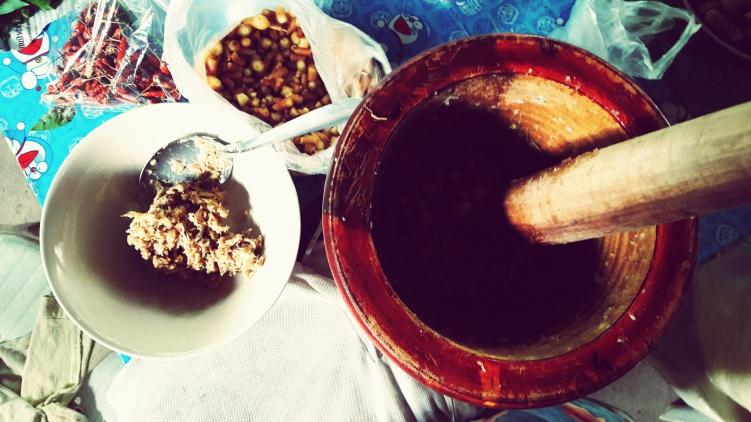
A culinary journey into Goa’s vanishing dishes, the ingredients that once defined them, and the cultural revival bringingthembacktolife.
INTRODUCTION
Goa’s culinary image has long been dominated by a handful of iconic dishes: pork vindaloo, prawn balchão, and fish curry rice. But hidden beneath this spotlight lies a deeply layered food heritage, built not on popularity but on ritual, region, and resilience. As modern menus and global palettes
take centre stage, Goa’s traditional kitchen has quietly suffered. Several ancestral dishes, once cornerstones of household cooking, have faded from memory and mealtime.
Today, however, a growing cultural movement is reigniting interest in these forgotten flavours. Driven by food scholars, farm-to-fork advocates, and heritage-focused hospitality spaces, Goa is slowly reclaiming the culinary identity that once defined it beyond the commercial lens.
THE DISAPPEARING TABLE

Over the past three decades, Goa’s food landscape has undergone rapid evolution Urbanisation, tourism, and convenience have led to a shrinking of home-cooked traditions. Dishes that once marked the rhythm of festivals, seasons, and daily life are no longer commonly prepared. Among the most notable lost or fading dishes: Tisreo Sukhem: A dry stir-fry made of small clams, grated coconut, kokum, green chillies, and onions. This coastal delicacy, once a staple in Hindu and Catholic homes alike, is now rarely served outside village kitchens.
Tonak: A thick, spicy curry made from alsande (black-eyed peas) or white vatana, once paired with sanna or local poi. Once found at every feast a n d p o s t - m a s s S u n d a y m e a l , i t ’ s n o w overshadowed by more marketable meat curries.
Khatkhate: A Goan Saraswat preparation of seasonal vegetables and lentils, spiced with teppal (Sichuan pepper). This temple-style dish was traditionally prepared during Ganesh Chaturthi and Shigmo festivals.
Kismur: A fiery mix of dried prawns, onions, grated coconut, and chilli, served as a side to enhance a humble rice plate.
Pezz: A lightly fermented rice gruel served with pickle or dried fish. This dish was once the nourishing comfort food of monsoon evenings. These recipes are rarely documented and were often passed down orally. As generations shift away from intergenerational households, the know-how is being lost, not due to a lack of value, but due to a lack of visibility.
INGREDIENTS THAT SHAPED TRADITION
The erosion of Goa’s culinary memory isn’t just about recipes; it’s about the disappearance of the ingredients they depended on.
Many traditional Goan dishes were built on local, seasonal, and often heirloom produce. The revival of these dishes is therefore intrinsically linked to the reintroduction of native crops.
Myndoli Banana (Moira Banana)
Grown predominantly in Bardez taluka, this large, sweet variety of banana was once a regular feature in Goan kitchens. It is particularly suited for desserts like halwa, fried fritters, and offerings during Ganesh festivities In 2021, it was granted Geographical Indication (GI) status, prompting renewed interest in its cultivation.
Agassaim Brinjal
Known for its soft texture and distinct flavour, this
purple eggplant is native to the village of Agassaim. It was commonly used in curries, stews, and stuffed preparations. In 2023, it too received GI protection, sparking farm-level revival efforts. The gradual phasing out of such indigenous produce led to the decline of dishes dependent on them. Their resurgence is essential not only for preserving biodiversity but for ensuring the authentic taste of Goa returns to its table.
THE ROLE OF SEASONALITY & RITUAL
Traditional Goan cooking is deeply rooted in season and ritual. Each dish was linked to a time of year, a spiritual observance, or a familial milestone.
Patoleo (steamed turmeric-leaf sweets filled with jaggery and coconut) are made during Nag Panchami, Sao João, and Konsanchem Fest. Godshe (sweetened broken rice with coconut milk) is typically prepared during the harvest and on the day of Ganesh Chaturthi.
Bimbli Uddamethi, a tart curry of bilimbi and fenugreek, is consumed in the post-monsoon season when bilimbi trees bear fruit abundantly. Sanna, soft fermented rice cakes, are reserved for feasts, weddings, and Sundays. In these rituals, food wasn’t just sustenance; it was symbolic, spiritual, and deeply personal. The disappearance of such recipes has meant a loss of context as much as taste.
THE RENAISSANCE: WHY NOW?
There is a renewed push to reintroduce these dishes into mainstream culinary consciousness, and the reasons are cultural, economic, and ecological.
1. Cultural Reconnection
As Goa’s population grapples with the effects of over-tourism and urban change, there’s a conscious shift towards reclaiming cultural identity. Food has become one of the most accessible and impactful mediums for this revival.
2. Culinary Tourism
Travellers today seek authenticity Local experiences like monsoon thalis, heritage cooking workshops, and farm-based tastings now feature dishes such as Almona, Tisreo Sukhem, and Patoleo presented not as novelties but as a legacy.
3. Seed Conservation & Biodiversity
The GI tagging of produce like Myndoli banana and
Agassaim brinjal has boosted awareness about indigenous farming and sustainable sourcing. Chefs and growers are beginning to work together to restore culinary biodiversity.
4. Digital Documentation
Food historians, local bloggers, and grassroots cultural groups are recording oral recipes, shooting videos, and archiving forgotten methods. As a result, younger generations are being reintroduced to foods they’ve never tasted, but always owned.
RESTORING LEGACY THROUGH THE PLATE
If a culture is remembered through its rituals, then its cuisine is its most intimate archive. The revival of Goa’s forgotten dishes is not merely a culinary pursuit; it is a movement of reclamation that spans kitchens, farms, markets, and memory.
This restoration is being quietly championed not by celebrity chefs, but by families who continue to cook Pezz during monsoon, by farmers returning to heritage seeds, by market vendors who still stock the last of the season’s bilimbi, and by writers and cultural custodians documenting recipes that risk extinction.
Every element, from sourcing indigenous vegetables like Agassaim brinjal to preparing Tonak during temple feasts, forms a thread in the fabric of Goa’s culinary identity. These threads are now being woven back together with intention.
The process isn’t fast. It requires time. Precision. Storytelling. But most of all, it requires belief, belief that a dish once nearly forgotten can still stir something deep in the Goan heart.
Because this isn’t just about what we eat. It’s about who we become when we remember.
A CONCLUSION
Beyond vindaloo lies a Goa far deeper than postcards portray. Its culinary traditions are layered with faith, memory, and seasonality, an edible tapestry woven over centuries. The revival of these forgotten flavours is not a trend. It is an act of reclamation.
In every spoonful of Khatkhate, every steamed leaf of Patoleo, every grain of fermented Sanna, lies a story of resilience. Of families, festivals, fields, and food once lost, now finding their way home. Let this not be nostalgia. Let it be nourishment.
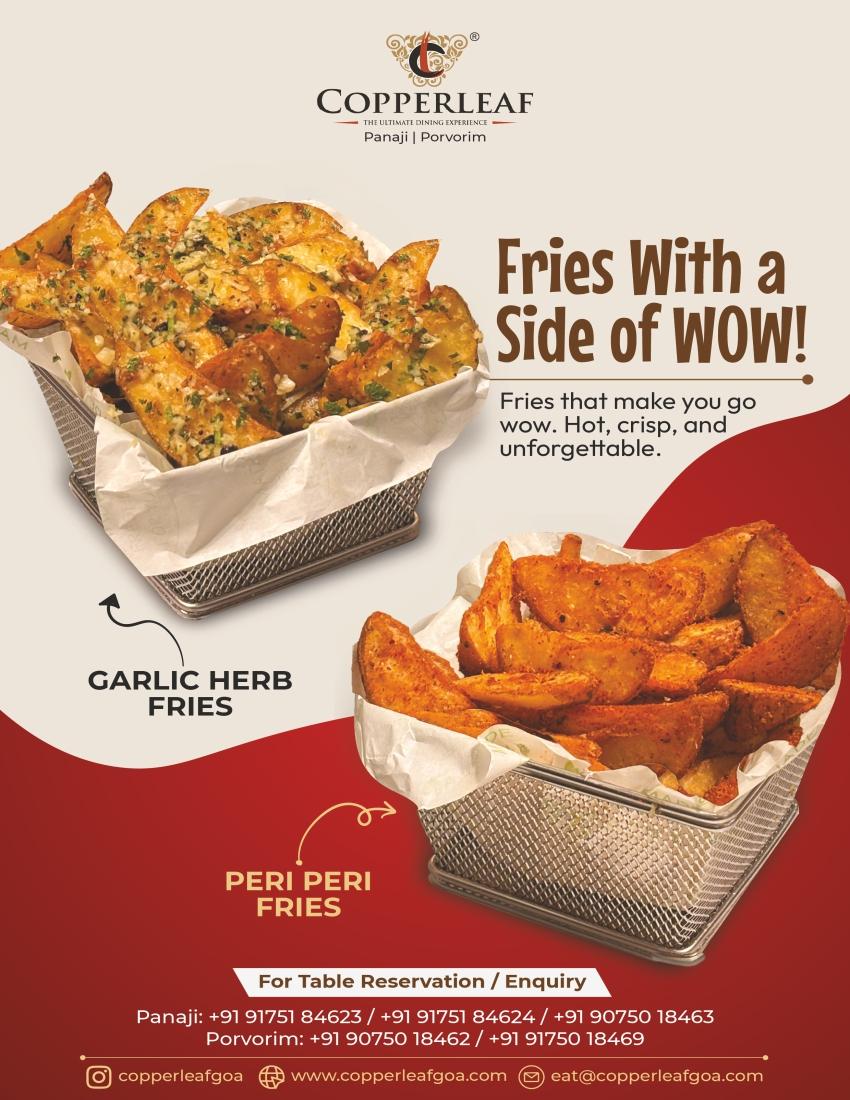
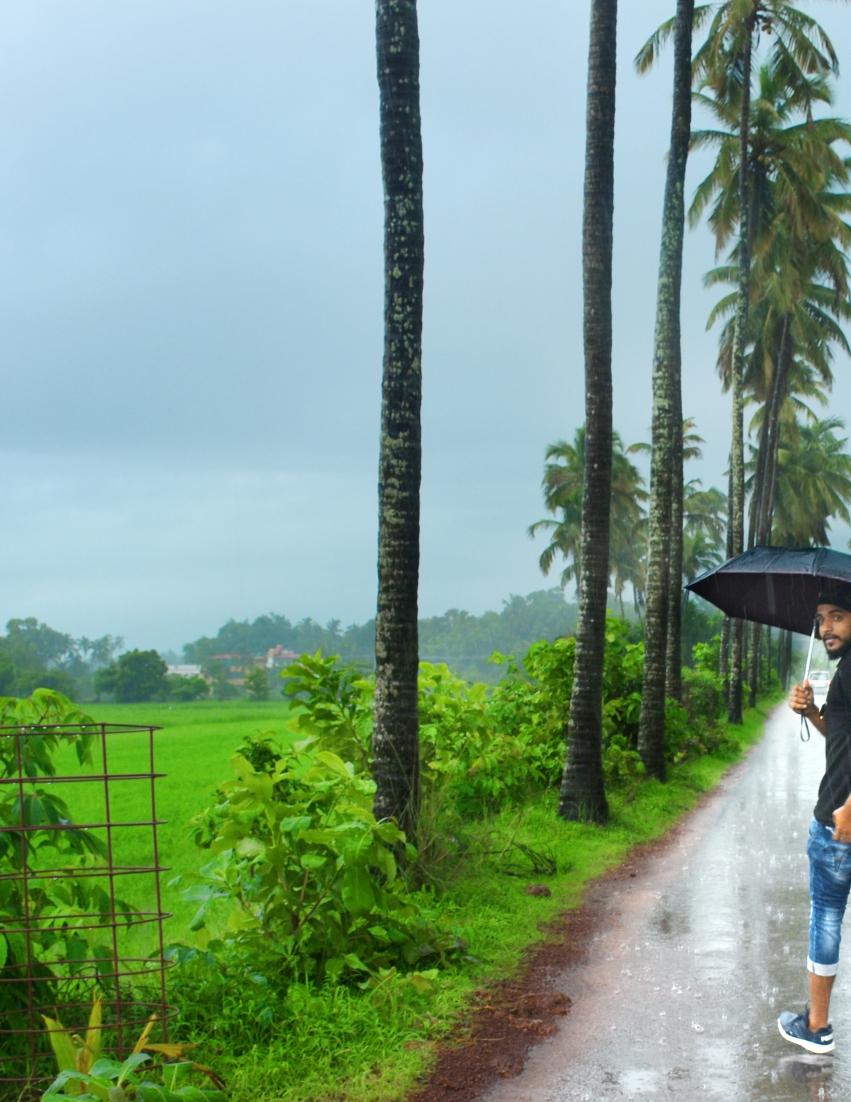
By Gauri Ghadge
MONSOON MAGIC IN GOA
Why Rainy Season is the New Peak Season
Goa’s monsoon, once dismissed as a tourist dead zone, is today the most soulful and sensorial experience the state offers. In this elaborate cover story, we delve into how the rainy season has evolvedintoacultural,culinary,andeconomicphenomenon.


There was a time when Goa, the sunshine state of India, dimmed during the rains. As dark clouds gathered in June, so too did the signs of seasonal closure: beach shacks folded, clubs s h u t d o o r s , f o r e i g n t o u r i s t s disappeared, and hoteliers sighed into a quiet few months The southwest monsoon, although vital to the ecology and culture of the state, was long viewed as an inconvenient interlude in Goa’s beach-party narrative. But over the last few years, something remarkable has happened. The rains no longer empty the land; they enchant it. Domestic footfall has surged. Festivals that were once hyperlocal are being rediscovered by travellers. Eco-tourism thrives. Boutique hotels and luxury properties are rebranding the monsoon not as an off-season, but as a second summer. The narrative has shifted from sunburnt skin and beachside cocktails to misty trails, steaming bowls of monsoon-inspired food, and a deep cultural resonance that only the rains
can reveal.
Today, the monsoon is not only welcomed, it is celebrated. And Goa, lush and rain-washed, is having a reawakening.
THE OFF-SEASON THAT WAS Traditionally, Goa’s tourist calendar followed a predictable rhythm October to March was peak season: beach weather, international tourists, EDM festivals, and full hotel bookings. April to May brought domestic tourists. June to September? The dreaded lull. International charters stopped flying in, monsoon winds made beach activities unsafe, and many seasonal businesses hibernated.
This dry spell was so entrenched that it shaped policies, pricing, and perceptions. Hoteliers offered up to 50% discounts just to survive. Events disappeared from calendars. Even the Goa Tourism Department focused its energy on winter promotions.
Yet beneath the economic slowdown, something beautiful brewed: an
unexplored Goa, still vibrant and alive, just more subtle Locals knew it Filmmakers captured it. Writers romanticised it. But now, tourists too have learnt to embrace it.
T H E P A N D E M I C P I V O T : REDISCOVERING GOA THROUGH LOCAL EYES
The COVID-19 pandemic changed travel habits globally. With international travel halted, Indians began to explore their own country more deeply. Goa, accessible by road and air, became the perfect monsoon getaway for urban dwellers looking to escape the isolation of lockdown.
Suddenly, instead of foreigners in beach shorts, there were remote workers in Assagao cafes. Instead of packed nightclubs, couples were trekking through rain-drenched forests. Instead of shacks, there were boutique villas offering monsoon menus and Ayurvedic therapies. The rains, once feared, became fashionable. This shift is evident in the rising interest

in monsoon travel packages and offseason hotel bookings While exact growth percentages vary by source, multiple travel platforms confirm a year-on-year increase in monsoon travel searches and occupancy, especially between 2021 and 2023.
NATURE’S THEATRE: GOA IN THE MONSOON
It’s difficult to describe the monsoon in Goa without slipping into poetry. The red laterite earth bleeds into green as paddy fields revive Waterfalls, like Dudhsagar and Harvalem, roar back to life The Western Ghats, already UNESCO-protected, turn mythical, shrouded in mist and echoing with the calls of migratory birds. Trekking becomes a transcendental experience Paths through Mhadei Wildlife Sanctuary or Netravali are slick and challenging, but offer glimpses of wild orchids, amphibians, and rare butterflies. Offbeat destinations like Chorla Ghat or Cotigao become havens for birdwatchers and solitude
seekers.
There’s a visceral rawness to the landscape during the rains; it reminds you that Goa is not just a place of leisure, but of life. Every puddle sings, every field hums, every banyan breathes.
URBAN ESCAPES AND HINTERLAND HOMESTAYS
Another layer of Goa’s monsoon transformation lies in the growth of alternative accommodations. With the influx of tourists seeking meaningful, immersive stays, villages like Aldona, Parra, and Curtorim have emerged as monsoon havens.
H i n t e r l a n d h o m e s t a y s h a v e mushroomed, offering guests the chance to witness traditional Goan lifestyles during the rains. From fishing in rain-fed ponds to assisting in planting rice saplings, the monsoon turns the visitor into a participant, not a spectator. Urban professionals seeking reprieve from corporate chaos find peace in these simple, grounded
routines.
This shift has not only distributed tourism income across rural belts but also revived cultural pride. Locals now host guests with home-cooked monsoon meals, village legends, and traditional music.
FESTIVALS THAT SPEAK IN RAIN
Unlike commercial beach festivals, Goa’s monsoon celebrations are deeply rooted in its agrarian and religious traditions. These are not orchestrated for tourism They are community rituals, passed through generations, now slowly entering the cultural curiosity of mindful travellers.
Ÿ São João (June 24): Villagers leap into wells, wear floral wreaths (kopels), and sing in honour of seasonal rebirth It’s a joyous, unfiltered expression of rain-loving revelry.
Ÿ Sangodd (June 29): A river festival where boats are turned into floating stages.
Ÿ Chikal Kalo (July): Held in Marcel,
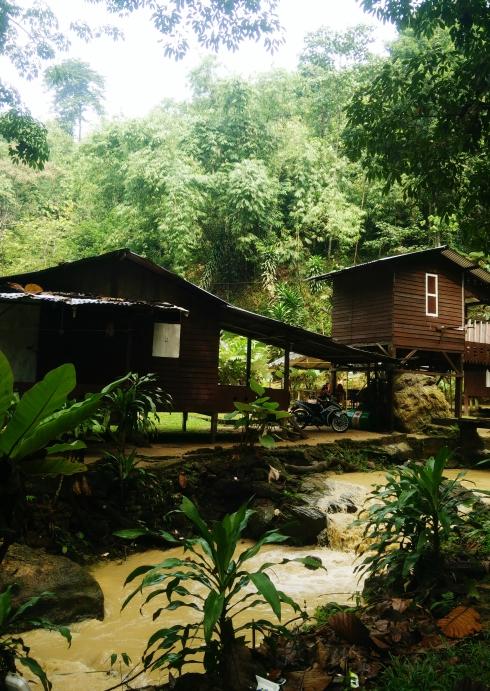
this festival sees people smear each other with mud in a tribute to monsoon fertility.
Ÿ Bonderam (August): A vibrant mock-battle celebration in Divar Island, complete with music, floats, and feasting.
These festivals give monsoon tourism a spiritual and social depth. They connect visitors not just to Goa’s sights, but its soul.
MONSOON CUISINE: A CELEBRATION OF THE SENSES
Goa’s kitchens evolve with the rains. The monsoon menu is nostalgic, comforting, and deeply seasonal. Freshly foraged mushrooms known as alambe are turned into rich xacutis. There is pez, a rice gruel paired with pickled mango or dried fish. Jackfruit seeds and tender bamboo shoots appear in curries And then there’s patoleo, sweet rice cakes stuffed with jaggery and coconut, steamed in turmeric leaves.
Restaurants and resorts are embracing
these traditional offerings with contemporary flair. Seasonal menus shift weekly depending on local availability. Monsoon specials combine g l o b a l t e c h n i q u e s w i t h G o a n ingredients: kachori chaat reimagined, fish tikka with tulsi pesto, or a panna cotta infused with coconut water. The rains have brought back a sense of terroir to Goa’s food. Tourists today seek not just meals, but stories on a plate.
THE RISE OF WELLNESS AND SLOW TRAVEL
With the sunburn crowd absent, monsoon attracts a different traveller: those who want to heal, rest, and r e f l e c t A y u r v e d a , y o g a , a n d naturopathy centres report increased b o o k i n g s b e t w e e n J u n e a n d September.
Wellness experts note that the monsoon is ideal for Panchakarma, detox, and mental reset, with many visitors now planning their wellness journeys during this season.
Eco-retreats in Saligao, Olaulim, and Canacona offer forest bathing, digital detox packages, and yoga in raindrenched bamboo huts. Mindfulness is no longer a buzzword. In monsoon Goa, it’s a way of life.
CREATIVE COMMUNITIES AND ARTISTIC INSPIRATION
The rains have also birthed a thriving artistic subculture in Goa. Writers, painters, musicians, and content creators are increasingly choosing to spend monsoons here, not to escape the world, but to engage with it more deeply.
Art residencies pop up in the villages of North Goa, while poetry readings and acoustic gigs become intimate gatherings around fireplaces. The slow pace, moody skies, and nature’s drama provide ideal inspiration.
Monsoon Goa, for many, is not just a destination. It’s a creative retreat, a place where expression finds fertile ground.
THE INDUSTRY RESPONDS
Hospitality stakeholders are no longer content with writing off the rains Instead, they’re investing in them.
Luxury properties now promote
romantic monsoon getaways with fireplaces, in-room spa services, and candlelit rain dinners.
Boutique hotels create seasonal packages, including treks, heritage walks, and culinary workshops.
Homestays and B&Bs focus on storytelling: families offering rainy-day recipes, traditional games, and local lore.
Post-pandemic, Goa has seen a significant increase in Airbnb and homestay bookings during monsoon months, indicating demand for longer, immersive stays.
MONSOON TRAVEL TRENDS: WHO’S COMING AND WHY
The revival of monsoon tourism has not only diversified Goa’s offerings but also its visitors Analysis from industry observers indicates that the rainy season now appeals to a broader and more discerning demographic.
Young working professionals and millennial couples from urban metros are leading the charge, seeking budget-friendly yet experience-rich escapes For many, Goa's monsoon represents a chance to disconnect from hyper-digital lifestyles and reconnect with nature.
Solo travellers and backpackers are also increasingly drawn to the rainwashed state The reduced crowds, affordable stays, and poetic weather create ideal conditions for solo exploration and reflection.
Additionally, older travellers and retirees, traditionally absent from monsoon tourism, are showing growing interest Thanks to improved road infrastructure and curated travel packages, the monsoon is now seen as a season for rejuvenation rather than retreat.
Travel platforms confirm a steady rise in off-season searches and bookings for m o n s o o n G o a , e s p e c i a l l y f o r experiences like waterfall trails, nature photography tours, and wellness retreats.
THE ROLE OF DIGITAL MEDIA IN
S H A P I N G G O A ’ S R A I N Y
RENAISSANCE
One cannot ignore the role of social media in recasting the image of Goa’s

monsoon. From Instagram reels of misty mornings in Assagao to YouTube vlogs capturing treks to hidden waterfalls, digital content creators have become ambassadors of the season.
What was once dismissed as ‘dead time’ for tourism has now become fertile ground for digital storytelling. Drone footage of rain-fed rivers, slow-motion visuals of raindrops over tiled heritage roofs, and food bloggers showcasing monsoon menus have all contributed to this perceptual shift.
Influencer-led travel has introduced a new kind of visitor: one who arrives curious, informed, and eager to experience Goa beyond the brochure. In many ways, digital media has done what no advertising budget could: turn the monsoon from a marketing challenge into a cultural movement.
GOVERNMENT’S PUSH FOR YEARROUND TOURISM
The Goa Tourism Department has gradually begun shifting its messaging. While some older campaigns remain,

the focus is increasingly on hinterland experiences, seasonal cuisine, and lesser-known festivals.
Investments have been made in signage for trekking routes, safety measures at waterfalls, and training programs for monsoon guides The vision is clear: spread the benefits of tourism beyond the beaches, beyond the season, and into the state’s interiors.
Government officials have reiterated their goal of making Goa a “365-day destination,” and the monsoon is being seen as a key pillar of this strategy.
THE ECONOMICS OF MONSOON TOURISM
The financial implications of this shift are substantial. What was previously a lean quarter is now a growing revenue stream for the hospitality sector. Monsoon-specific bookings, curated experiences, and seasonal products have opened up a parallel tourism economy.
According to local tourism analysts, average hotel occupancy rates in the monsoon have doubled since 2017. Local transport providers, homestay owners, and F&B establishments have seen a boost in business, and the
employment opportunities, especially in rural regions, have become more evenly spread throughout the year.
This is year-round tourism at its most inclusive and sustainable.
COMMUNITY INVOLVEMENT AND RESPONSIBLE PRACTICES
The success of monsoon tourism hinges not only on demand but on how responsibly it is managed. Grassroots efforts, from rural village tourism boards to local NGOs, are championing eco-sensitive practices.
Waste segregation initiatives, guided eco-walks, farm visits, and cultural education are being integrated into the tourist experience. These communitybased approaches not only preserve Goa’s natural and cultural wealth but also empower locals to be custodians of their own land.
CHALLENGES AND THE ROAD AHEAD
Of course, the monsoon renaissance isn’t without pitfalls.
Ÿ Environmental degradation at popular waterfalls like Dudhsagar
Ÿ Over-tourism in fragile ecosystems
Ÿ Lack of trained adventure guides during slippery treks
Ÿ Inadequate public transport to hinterland locations during heavy
rains
However, these are not insurmountable. R e s p o n s i b l e t o u r i s m m o d e l s , community-led initiatives, and stricter regulations can ensure that Goa’s rainy magic doesn’t come at the cost of its ecology.
The real challenge is perception. The more we show that Goa in the rains is not a compromise, but an upgrade, the more we reshape the mindset of future travellers.
A SEASON TRANSFORMED
Goa no longer hibernates through the rains. It flourishes. What was once seen as a time to leave is now a time to arrive. The monsoon has matured into a sophisticated offering: raw yet refined, local yet inclusive, introspective yet celebratory.
It invites not the high-season hedonist, but the mindful explorer Not the checklist tourist, but the curious wanderer.
As raindrops fall on the tiled roofs of Panjim, as frogs croak from old wells in Ponda, as a family shares patoleo around a smoky kitchen in Salcete, Goa, in the monsoon, is not asleep. It is dreaming.

INCREDIBLE KITCHEN

GREEN MANGO & COCONUT COLD CURRY WITH POHA PAPAD
By Aditi Malhotra
There are few things more comforting in Indian summers than the sharp tang of raw mangoes paired with the cooling richness of coconut. This cold curry is inspired by traditional South Indian flavours but served with a twist—chilled and perfect for warm afternoons. Paired with delicate poha papads that add texture and contrast, this dish is a celebration of simplicity and seasonal joy.
It’s light, flavourful, and doesn’t require turning on the stove for too long—exactly what summer dining should feel like.
INGREDIENTS
For the cold curry:
1 medium-sized raw green mango, peeled and grated
1 cup fresh grated coconut
1 green chilli, chopped (adjust to taste)
1/2� teaspoon cumin seeds
1/4� teaspoon turmeric powder
Salt to taste
1/2� cups plain curd or slightly sour yogurt
A few fresh curry leaves
1 tablespoon coconut oil
Method
Prepare the cold curry:
For tempering:
1 teaspoon mustard seeds
1 dried red chilli
1 teaspoon urad dal
A few more curry leaves
For poha papad:
1 cup thick poha (flattened rice)
Salt to taste
Pinch of ajwain or cumin (optional)
Water to soak Ghee or coconut oil for brushing
F In a small mixer jar, grind grated coconut, green chilli, and cumin seeds into a coarse paste using a splash of water.
F In a bowl, whisk the curd until smooth and add turmeric, salt, and the coconut paste. Mix well.
F Stir in the grated raw mango and a few torn curry leaves. Chill the mixture in the refrigerator for at least 30 minutes.
Temper the curry:
F In a small tadka pan, heat coconut oil. Add mustard seeds and let them splutter.
F Add urad dal, dried red chilli, and curry leaves. Fry till golden and aromatic.
F Pour the tempering over the chilled curry just before serving.
To Serve:
F Pour into chilled bowls or glasses. Drizzle the lemon zest oil on top, and garnish with microgreens, edible flowers, or toasted sunflower seeds for crunch.
Make poha papads:
F Wash the poha quickly in water and let it soak for about 5 minutes, just until soft but not mushy.
F Drain excess water and mix in salt and ajwain.
F Flatten small portions between two sheets of parchment or plastic and shape into thin discs.
F Let them sun dry for a day or dry in a low-temperature oven (60–70°C) until crisp.
F Before serving, lightly brush with ghee or coconut oil and roast on a tawa until puffed and golden
To Serve:Ladle the chilled curry into small bowls or katoris and top with a few more curry leaves or a sprinkle of crushed papad. Serve alongside warm poha papads for dipping or crumbling on top. It’s perfect as a starter, a light lunch, or a palate cooler between courses.
INCREDIBLE KITCHEN
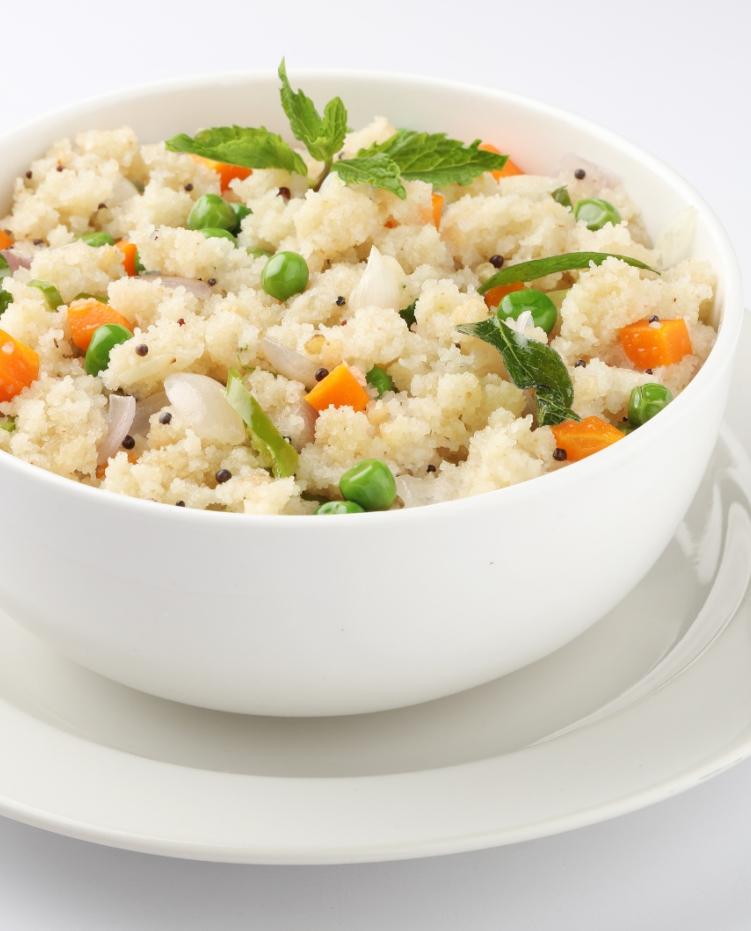
TEFF UPMA WITH ROASTED CASHEWS & CURRY LEAF OIL
By Aditi Malhotra
Upma has long been a breakfast staple across Indian homes. But this version brings together traditional flavours with the goodness of teff—an ancient grain that is gluten-free, high in protein, and rich in iron and calcium. Soft yet nutty, teff makes a surprisingly comforting base for this modern-day upma. Enhanced with the crunch of roasted cashews and a drizzle of aromatic curry leaf-infused oil, it’s hearty, nourishing, and ideal for a warm brunch or early dinner.
INGREDIENTS
For the upma:
1/2� cup teff grain (rinsed and drained)
1� cups water
1 small onion, finely chopped
1 green chilli, finely chopped
1-inch piece of ginger, grated
1 small carrot, diced
1/4� cup green peas (fresh or frozen)
Salt to taste
1 tablespoon ghee or oil
For Curry Leaf Oil
10–12 fresh curry leaves
2 tablespoons cold-pressed coconut or sesame oil
For tempering:
1 teaspoon mustard seeds
1 teaspoon urad dal
1 teaspoon chana dal
8–10 curry leaves
A pinch of asafoetida
For the garnish:
1/4� cup roasted cashews
1 tablespoon curry leaf oil (see below)
Fresh coriander, chopped
Heat the oil on low flame, add curry leaves, and let them sizzle without browning. Turn off the heat and allow the leaves to infuse for 5–7 minutes. Strain if preferred.
Method
F In a thick-bottomed pan, heat ghee or oil and add mustard seeds. Once they splutter, add urad dal, chana dal, and asafoetida. Sauté until golden.
F Add chopped onion, green chilli, and ginger. Cook until the onions turn soft.
F Toss in the diced carrot and peas. Sauté for 2–3 minutes.
F Add the rinsed teff and stir well to coat the grains with the spices.
F Pour in the water and add salt. Bring to a boil, then reduce heat, cover the pan, and cook on low flame for about 10–12 minutes, or until teff is cooked and the mixture thickens. Stir occasionally to prevent sticking.
F Once cooked, turn off the heat, fluff with a fork, and let it rest covered for 5 minutes.
To Serve
Spoon the teff upma into a shallow bowl, top with roasted cashews, a drizzle of warm curry leaf oil, and fresh coriander. Serve hot, optionally with a wedge of lime or a side of homemade pickle for added zing.
FEEDING THE DEAD
Cultures Where Food Crosses into the Afterlife
By Gauri Ghadge

Humanity’s relationship with the dead is not just spiritual or emotional. It’s often culinary. Across time and cultures, food has served as a sacred bridge between the living and those who have passed on. From the altars of Mexico to the riverbanks of India and the solemn loaves of Spain, we explore how cultures feed their dead, honouring memory
through rituals rich in flavour, history, and reverence.
DÍA DE LOS MUERTOS (MEXICO): A FEAST WITH THE DEPARTED
Every year on November 1st and 2nd, families across Mexico welcome back the spirits of their departed loved ones through the vibrant festival of Día de los
Muertos. Homes are transformed with ofrendas, elaborate altars adorned with photographs, marigolds (cempasúchil), candles, incense, and, most importantly, food and drink. These offerings are believed to guide spirits from the afterlife back to the land of the living for a brief reunion.
At the heart of the altar lies pan de muerto, a sweet, yeasted bread flavored with orange blossom water and often decorated with bone-shaped patterns and a central knob representing a skull. Contrary to popular belief, pan de muerto does not originate from Aztec sacrificial rites. Instead, it’s a colonialera adaptation influenced by Catholic traditions such as Spain’s pan de ánimas, fused with indigenous Mexican customs of honouring the dead.
The altar’s menu also features dishes the deceased enjoyed in life: tamales, mole, pozole, and mukbil pollo (a buried, banana leaf–wrapped chicken tamale traditionally made in Yucatán). Drinks like hot chocolate, champurrado, atole, and occasionally pulque or mezcal are included, meant not for literal consumption by the spirits, but to nourish them symbolically.
These acts are deeply rooted in the idea that the essence of the food feeds the soul. Once the spirits have "visited," families gather to share the meal, transforming grief into communal joy As Sam Gutierrez wrote in Food & Wine, “The sugar skulls, cookies, bread, and Coke bottles don’t just complement the moment; they are the moment.”
PITRU PAKSHA & SHRADDHA (INDIA): RICE, RITUAL, AND REVERENCE
In India, honouring the dead is not confined to a single day; it stretches across Pitru Paksha, a 16-day lunar period observed annually during the Hindu m o n t h o f B h a d r a p a d a ( u s u a l l y September–October). During this time, families perform �r�ddha rituals to pay homage to their paternal ancestors spanning up to three generations.
The primary ritual, pinda daan, involves the offering of rice or barley balls mixed with ghee, black sesame seeds, and honey. These pindas are placed near sacred rivers or water bodies, accompanied by tilatarpana, libations of water and sesame. It is believed that these offerings reach ancestors in the
afterlife and help ensure peace in their journey beyond.
The food prepared during �r�ddha follows strict sattvic guidelines: vegetarian, onion- and garlicfree, and cooked with purity and intention. Dishes often include kheer (rice pudding), lapsi (wheat porridge), moong dal, boiled pumpkin, and steamed rice—served on banana leaves or traditional copper utensils.
One of the most symbolic acts involves feeding crows, revered as messengers of Yama, the god of death. If a crow partakes in the food, it is believed that the ancestors have accepted the offering. Only after this do family members and Brahmins partake in the meal, reinforcing the sacred hierarchy of nourishment: spirits first, then the living.
The roots of this tradition can be traced back to the Mahabharata, where Karna, after his death, was offered gold instead of food due to his neglect of ancestral rituals. As penance, he was allowed to return for 15 days to receive food offerings, thus giving rise to Pitru Paksha.
PAN DE ÁNIMAS (SPAIN): SACRED LOAVES OF ANCIENT HERITAGE
While less known globally, Spain’s Pan de Ánimas (Bread of Souls) tradition holds deep spiritual significance. Observed on All Saints’ Day (November 1st) and All Souls’ Day (November 2nd), this medieval practice involved baking bread loaves to honour the dead, often in symbolic shapes like bones, skulls, or crosses.
These loaves, also called pan bendecido or pan de difunto, were blessed by priests during mass and either placed on graves, distributed to the poor, or shared among family and neighbours. In many communities, the bread served both as a symbolic offering to the deceased and an act of charity, reflecting the dual values of remembrance and compassion.
Over centuries, this evolved into regional confections such as panellets in Catalonia (made of marzipan and pine nuts), fogassa in Valencia (anise-scented sweet bread), and Galicia’s castañada, where roasted chestnuts accompany rituals for the dead.
Though the practice has faded in many parts of Spain, remnants survive in church feasts and rural
FEATURE
customs. Scholars trace similarities between pan de ánimas and earlier European mortuary rites, including Roman robus and Egyptian bread offerings, affirming a shared global instinct: to feed the souls who fed us.
THREADS THAT BIND: A UNIVERSAL RECIPE FOR REMEMBRANCE
Despite being oceans apart, shaped by different geographies, languages, and theologies, the cultures of Mexico, India, and Spain share a remarkable convergence when it comes to feeding the dead. These traditions may look different on the surface, but they are stirred by the same invisible ingredients: memory, love, and the unbroken desire to honour those who came before. The first binding thread is the use of food as a sacred medium—a spiritual offering rather than mere sustenance. In India, the humble rice ball becomes a pinda, imbued with prayers and intent. In Mexico, sugar skulls and tamales become edible tributes, not just treats. In Spain, loaves of pan de ánimas serve as both symbols and sacrament, transforming flour and water into remembrance. Another shared element is the emphasis on purity and ritual precision. Every tradition prescribes how the food must be made. Ingredients matter. Timing matters. Vessels, utensils, even the hand that cooks, it all matters. Cooking becomes a sacred act, echoing the reverence of the ceremony itself. Then comes symbolism; in shape, in design, in meaning. Bone-shaped breads, skull-topped loaves, round pindas symbolising the completeness of life, these are not accidental choices. They reflect the way humans try to visualise the invisible. Each culture finds its own language to speak with the dead, and that language is often edible, visual, and deeply metaphorical. Finally, perhaps the most powerful thread is what happens after the offering, the shared meal. The food, once presented to the dead, is then consumed by the living. Families gather around tables, cook from memory, and tell stories. In this way, grief is softened by flavour. Loss becomes legacy. And remembrance turns into ritualised healing.
Ultimately, these practices remind us that death does not sever connection, it reshapes it. And food
becomes the language through which we continue the conversation.
ECHOES IN THE KONKAN: GOA’S SUBTLE RITUALS OF REMEMBRANCE
While Goa may not have a grand public festival centred on ancestral offerings, its remembrance rituals are no less profound. In Goan Catholic households, Mass intentions are offered on death anniversaries and All Souls’ Day, followed by family meals prepared in honour of the departed. These meals, often comprising sanna, sorpotel, kismur, or a simple fish curry-rice, are cooked with memory and emotion.
Among Goan Hindus, Pitru Paksha is observed with modest tarpan rituals involving offerings of water, sesame, and rice, along with satvik meals such as moong dal, boiled pumpkin, kheer, and plain rice. These are often cooked without fanfare, in the quiet of early morning, and offered near tulsi altars or under sacred trees.
Another nuanced form of remembrance is festive abstinence, refraining from sweets or celebratory dishes during mourning periods. This too is a form of culinary offering: a silent, daily act of devotion and discipline.
What makes Goa’s traditions unique is their intimacy. While not dramatic or performative, they are deeply rooted in family, silence, and sincerity. A steamed patoleo wrapped in turmeric leaf, set quietly near a photograph, may be Goa’s way of saying: we remember you through taste.
FOR THE LOVE THAT NEVER DIES
Across civilisations, we share food with the dead not because we expect them to eat it, but because it brings them back to the table. In feeding them, we nourish memory, lineage, and love.
In Mexico, the aroma of mole guides the ancestors home. In India, pindas ripple on holy waters. In Spain, sacred loaves warm village altars. And in Goa, a quiet kitchen carries generations in every ladle of curry or pinch of coconut jaggery.
These offerings are not just about death. They are about life, life that continues through stories, recipes, and remembrance.
Let every meal carry a memory. Let every plate honour the past. Let us feed the dead, so the living may never forget.















THE NEW WAY TO DINE
Culinary Collaborations Are Transforming Goa’s Food Scene
ByArmaan Malhotra
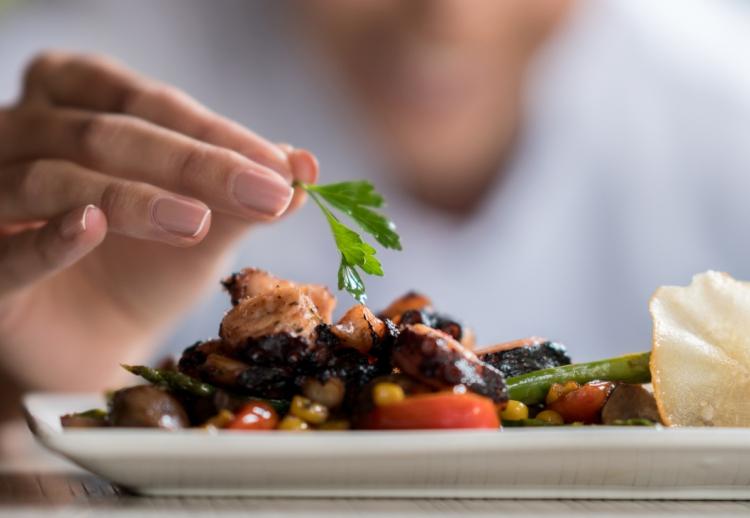
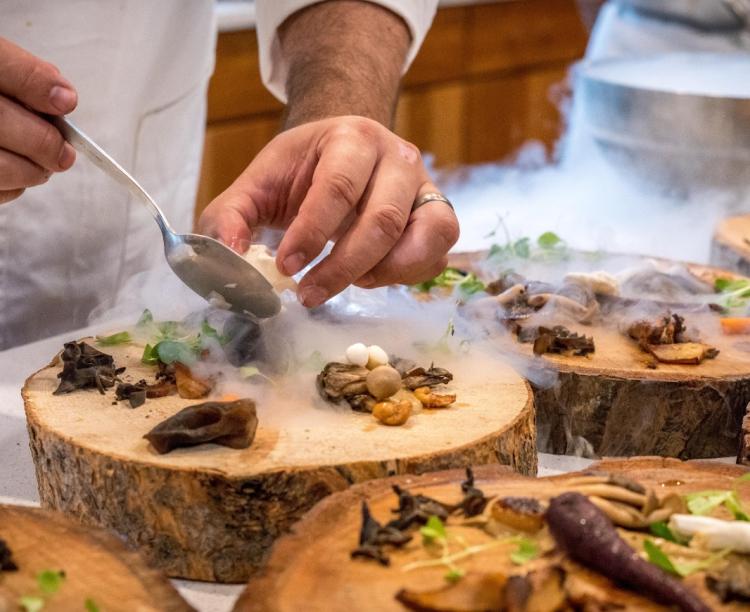
Where chefs meet, avours fuse, and dining becomes an experience
Once known purely for its beachside shacks and seafood staples, Goa’s culinary identity has evolved far beyond fish thali and feni. In the past few years, something exciting has been happening quietly but powerfully—collaborations. Popup dinners, chef residencies, guest kitchen takeovers, and fusion tasting menus are reshaping the way people eat out in Goa.
This isn’t just about food. It is about creativity, community, and curiosity. It is about chefs breaking free from the boundaries of their own kitchens to experiment, learn, and share. And it is about diners being open to experiences that go beyond menus and regular service. Culinary collaborations are not a trend—they are a shift in mindset, and Goa is at the centre of this new movement.
WHY COLLABORATIONS WORK SO WELL IN GOA
Goa offers a unique setting that is both relaxed and rich in possibilities. It attracts a mix of local food lovers, global travellers, and creative professionals who are constantly looking for something different. The dining crowd here is experimental, open to flavour explorations, and loves the idea of storytelling through food.
The relatively small size of the state means that word spreads
quickly. A pop-up dinner in Assagao or a rooftop chef’s table in Panjim can become the most talked-about event of the weekend Restaurants and boutique properties have recognised this and are increasingly opening their kitchens to visiting chefs, travelling mixologists, and regional specialists. FROM COMFORT ZONES TO CREATIVE PLAYGROUNDS
What makes these collaborations exciting is that they are temporary and experimental. Chefs get to step away from their signature dishes and do something they’ve always wanted to try. A Rajasthani chef might create a Konkaninspired thali. A Japanese-trained cook may fuse miso and curry leaf. A local Goan home cook could find herself plating a dessert for a modern European menu.
These one-off or short-term events become creative playgrounds—and often, the results are stunning. You might eat a seven-course meal where each dish is a conversation between two regions, or sip cocktails that fuse Himalayan herbs with Goan spices. The element of surprise keeps the energy alive.
A PLATFORM FOR LOST RECIPES AND REGIONAL PRIDE
One of the most heartening aspects of these collaborations is the return of forgotten recipes and regional ingredients. Chefs from across India bring with them stories of their grandmothers' spice blends, heirloom grains, forest-foraged mushrooms, and temple-inspired sweets. In Goa, these stories

are met with enthusiasm and often reinterpreted using local elements like kokum, toddy vinegar, and moringa. Collaborative dinners have introduced diners to everything from Manipuri black rice pudding to Bengali kasundi ceviche, not as gimmicks, but as well-thought-out dishes with meaning.
THE BUSINESS OF CONNECTION
From a business point of view, these collaborations are also smart. They bring in new audiences, generate buzz on social media, and often sell out quickly. But more than that, they build relationships—between chefs, between venues, and between diners and the people behind the plate.
For emerging chefs, a pop-up or collaboration in Goa can be a stepping stone into the national culinary spotlight. For established names, it is a chance to reconnect with their creative side, away from the expectations of their home base.
WHERE
IT’S HEADED NEXT
The future of dining in Goa looks more fluid and imaginative than ever. With more chefs travelling, experimenting with regional identities, and even collaborating with artists and
musicians, food is becoming part of larger cultural conversations.
Expect to see tasting menus inspired by poetry, food and film pairings, foraging walks followed by wild picnics, and collaborative cookbooks born out of pop-up events. Goa is not just eating well—it is becoming a space where food is created, performed, and remembered.
FINAL BITE: THE JOY OF THE UNEXPECTED
What makes these culinary collaborations special is their fleeting nature. They are not meant to be repeated, massproduced, or locked into routine. They are moments of shared passion, flavours that may never exist again in quite the same way.
And in a world where everything feels on demand and predictable, this element of surprise and story is what makes dining feel magical again.
So next time you see an unfamiliar name on a menu or an event that blends two chefs’ worlds, book a seat. You are not just going for a meal—you are entering a memory in the making.

By Aditi Malhotra
BEYOND THE GARNISH
The Story and Science of Edible Flowers in Cocktails
ByAditi Malhotra
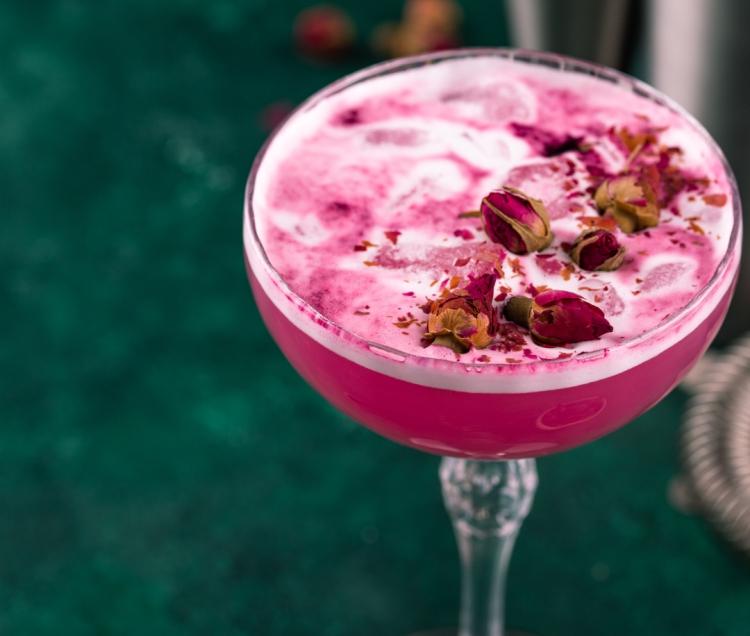

There’s something undeniably enchanting about a flower in a glass. Whether it’s a delicate violet floating on the surface, a marigold tucked into crushed ice, or a rose petal clinging to the rim, edible flowers bring a visual poetry to cocktails. But their role is more than ornamental. These blooms come with history, aroma, flavour, and an undeniable charm that’s making them a star ingredient at modern bars around the world, including in Goa.
In many ways, the growing use of edible flowers in cocktails is a natural evolution. As mixology moves closer to the kitchen, with bartenders behaving like chefs, experimenting with bitters, reductions, ferments, and infusions, flowers have become more than pretty accessories. They are botanical ingredients with a purpose.
A PETAL-LACED PAST: THE HISTORICAL ROLE OF FLOWERS IN DRINKS
The connection between flowers and drinking rituals goes back centuries In ancient Egypt, hibiscus was brewed into tart teas used during ceremonies. In China and Japan, chrysanthemum and plum blossom teas were part of refined social customs. In Europe, monks infused elderflower, lavender, and rose into medicinal liqueurs.
Even in India, flowers have long graced drinks and desserts. Rose sherbet, kewra water, and vetiver were common in Mughal kitchens, while hibiscus and bael were steeped for refreshing summer coolers in villages.
What we are seeing in today’s cocktail world is not a reinvention, but a rediscovery, a blending of the old with the new, reimagined through the lens of contemporary mixology.
FLAVOUR FIRST: WHAT DO FLOWERS ACTUALLY TASTE LIKE?
Each flower brings its own signature note, subtle but impactful. When used correctly, they can enhance or balance a cocktail just like herbs or spices do.
Ÿ Hibiscus – Tart and cranberry-like, perfect in spritzers and rum-based drinks
Ÿ Rose – Soft, floral, slightly sweet, pairs well with gin or citrusy vodka
Ÿ Chamomile – Mildly sweet and apple-like, often used in whisky sours or tea infusions
Ÿ Lavender – Earthy and slightly bitter, best with clear spirits like gin
Ÿ Marigold (Tagetes) – Sharp, citrusy, slightly peppery, works well in mezcal or tequila
Ÿ Butterfly Pea Flower – Neutral flavour, but dramatic colour-changing ability with lemon or
COCKTAILS AND CUISINE WITH ADITI

tonic
Ÿ Jasmine – Light and perfumed, a beautiful match for sake or white rum
The key is restraint. Used excessively, floral notes can feel soapy or overwhelming. But with a few petals, a tincture, or an infused syrup, flowers can completely shift the mood of a drink.
THE GOAN CONNECTION: FLOWERS THAT THRIVE LOCALLY
Goa’s tropical climate is a gift when it comes to florals. Many bars and home mixologists here are beginning to grow their own edible flowers or source them from sustainable kitchen gardens.
Ÿ Hibiscus and butterfly pea are found easily and make vibrant cordials
Ÿ Bougainvillaea (only certain varieties) is used for visual appeal, especially frozen in ice cubes
Ÿ Frangipani and jasmine are sometimes used in aroma-forward pairings or as floaters
Local mixologists are also drawing inspiration from Indian temple flowers and using them in spirit-free drinks, as part of seasonal menus during festivals or
monsoons.
TECHNIQUES: MORE THAN JUST A PRETTY TOPPER
Edible flowers can be used in cocktails in many different forms:
Ÿ Infusions – Soaking dried or fresh petals in spirits or syrups
Ÿ Tinctures – Concentrated floral extracts, used drop by drop
Ÿ Ice Cubes – Freezing small flowers in ice for slow infusion and beauty
Ÿ Garnishes – Fresh petals floated, rimmed, or placed on the foam
Ÿ Powders – Dried petals ground and sprinkled like spices
Some bartenders are now creating floral bitters, floral foams, and even clarified cocktails where the bloom is only in aroma, not visible at all. The creativity is endless, but always tied to the story the drink wants to tell.
CELEBRATION
There’s something deeply emotional about drinking a cocktail that smells like a garden, looks like a painting, and reminds you of a season or a memory. Flowers elevate a cocktail from just a drink to an experience They trigger nostalgia, create mood, and invite pause.
In a time where dining and drinking are as much about storytelling as taste, edible flowers are powerful narrative tools. They add elegance without extravagance, and joy without excess.
FINAL POUR: THE BLOOM ISN’T JUST ON THE SURFACE
Edible flowers in cocktails are not a trend, they are a quiet revival. They honour age-old traditions, tap into the sensory richness of nature, and give drinkers something to sip, see, and remember.
So the next time you see a petal in your glass, know that it is not there just to look beautiful. It is there to say something—about flavour, season, craft, and the art of slow pleasure.
And maybe, that’s what every great cocktail is meant to do.





A SYMPHONY BY THE SAL
Dining at The Fisherman’s Wharf, Goa’s Quintessential Riverside Gem
By Gauri Ghadge
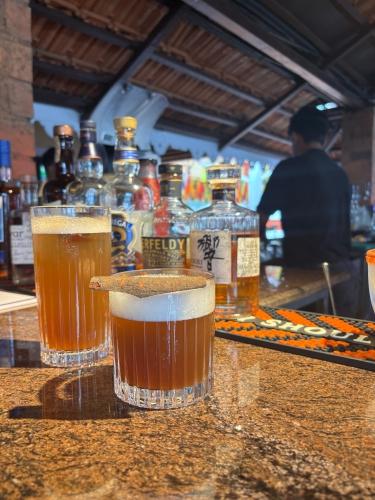
In the tranquil coastal village of Cavelossim, where the River Sal meanders through swaying palms and crimson-hued skies, stands a name that has become synonymous with Goa’s culinary excellence, The Fisherman’s Wharf. It is not just a restaurant; it is a celebration of the Goan spirit: vibrant, welcoming, and deeply rooted in tradition.
Set against a picturesque riverside backdrop, The Fisherman’s Wharf is a culinary haven that artfully blends local heritage

with global sophistication. Whether you are a first-time visitor or a Goan at heart, the Wharf offers more than just food; it offers a feeling. The feeling of Goa is in every bite, every note of music, and every warm gesture of service.
THE AMBIENCE: WHERE SERENITY DANCES WITH CELEBRATION
The Fisherman’s Wharf is designed to transport you. From the moment you walk in, the experience is immersive, a mix of
ByArmaan Malhotra
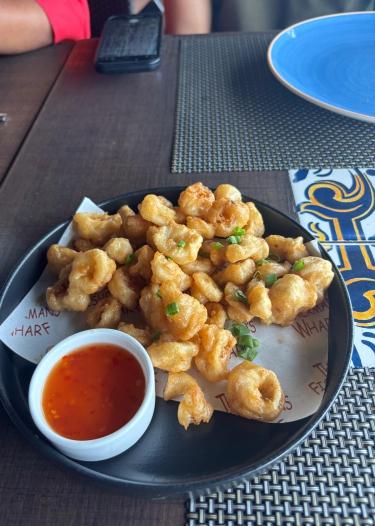
rustic elegance, nautical aesthetics, and breezy openness that brings the riverside indoors. Al fresco seating lines the banks of the Sal, providing sweeping views of the water shimmering under the Goan sun. Indoors, the atmosphere is electric, with live music, a buzzing bar, and the familiar laughter of guests returning for yet another meal.
Whether it’s a romantic date, a family reunion, or an impromptu celebration with friends, the Wharf adapts with grace. It’s not a place with one mood; it’s a canvas painted by your moment.
CULINARY ARTISTRY: GOA’S TRADITIONS WITH A GLOBAL ACCENT
The menu at The Fisherman’s Wharf is a living tribute to Goa’s rich culinary legacy, yet it isn’t bound by it. The chefs curate a dining experience that honours time-tested recipes while inviting modern flair. It’s Goan at heart but global in spirit. We began our journey with Spiced Panko Prawns, a beautifully plated appetiser where the delicate sweetness of the prawn meets a symphony of house-blended spices, encased in a crisp, golden panko crust. It is at once familiar and exciting, a masterclass in texture and balance.
The Calamari Batter Fry followed, an iconic Goan starter, elevated here with a light, airy coating and tender rings that melt in the mouth. Served with a tangy tartar dip, it transported us instantly to the shacks of Benaulim, albeit in a far more refined setting.
The Classic Chicken Tikka, marinated in yoghurt and handground spices, roasted in the tandoor until smoky and succulent, reminded us why some classics never fade. Each piece was tender, aromatic, and packed with the depth of slow, intentional preparation.
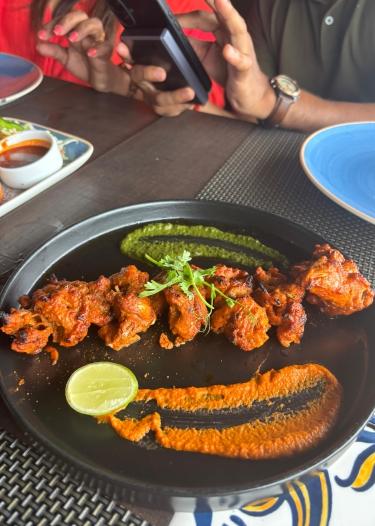
The Rawa Fried Chonak and Kingfish were a celebration of local coastal bounty. Coated in semolina, the fish was panfried to a perfect crisp, while the meat within remained moist and flaky The Racheado Chonak, however, was the undisputed star. Coated with a fiery red Goan masala of chillies, vinegar, and spices, the chonak was bold, punchy, and irresistibly addictive, a true homage to the spice-forward kitchens of Goan Catholic households.
No Goan meal is complete without Fish Curry Rice, and here, it is a soulful affair. The curry was tangy from kokum, rich with coconut milk, and layered with flavour. It tasted of home, of traditions passed through generations, served with care and consistency.
The naans and assorted breads arrived fresh, warm, and generously portioned, perfect accompaniments to mop up the vivid gravies.
THE SWEET FINALE: A DESSERT AFFAIR TO REMEMBER
The desserts at The Fisherman’s Wharf deserve their own standing ovation. Not content with just tradition or just trend, the menu artfully balances both.
The Dark Chocolate and Peanut Tart was rich, indulgent, and surprisingly layered. Silky ganache met a crunchy peanut base, sweet but never cloying, delivering texture and sophistication in every bite.
Then came the Chef Special Tiramisu, a surprising but welcome addition to the menu. This rendition of the Italian classic was nuanced, airy, and expertly restrained in sweetness. A creamy, dreamy palate cleanser that left us wanting more.
And finally, Bebinca, Goa’s queen of desserts. Its many layers,

painstakingly baked one at a time, revealed both artistry and nostalgia. Served warm, with a scoop of vanilla ice cream, it concluded our meal with grace and authenticity.
SERVICE WITH SOUL: THE ART OF TRUE HOSPITALITY
What sets The Fisherman’s Wharf apart isn’t just its food or location; it’s the people. The service is impeccable, but never stiff. The staff here radiate a genuine warmth and familiarity, offering thoughtful recommendations and happily accommodating preferences.
Even during peak hours, orders were prompt, water glasses never empty, and interactions always filled with local charm.
The team’s deep knowledge of the dishes, enthusiasm for Goan culture, and attention to every little detail elevated the entire experience.
RAISING THE BAR: BEVERAGES THAT TELL A STORY
The bar menu at The Fisherman’s Wharf is as carefully crafted as its food. From classics to creative, each cocktail is designed to match the mood and the meal.
One standout was the Sol de Goa, a refreshing, slightly citrusy cocktail made with locally brewed cashew feni, lime, mint, and just a hint of spice. It was Goa in a glass, rustic, refreshing, and spirited.

The bar also features a carefully chosen selection of wines, mocktails, and international spirits, ensuring that there’s something for every kind of connoisseur.
THE VERDICT: GOA’S CULINARY LANDMARK THAT NEVER DISAPPOINTS
It is no exaggeration to call The Fisherman’s Wharf one of the crown jewels of Goa’s food and hospitality industry. It is not just a restaurant; it is a multi-sensory experience that celebrates Goa, its culture, cuisine, music, and soul.
There’s a reason why it continues to win hearts year after year, with locals and tourists alike returning for their fix of authentic Goan food served with a side of riverside serenity.
In a sea of commercial establishments, The Fisherman’s Wharf stands tall, consistent, soulful, and ever-evolving. Whether you’re in search of your next great seafood meal, a place to impress guests, or simply a slice of Goa served fresh and honest, your journey must include a stop at this timeless Wharf. Goa isn’t just a place, it’s a way of life. And The Fisherman’s Wharf captures that essence flawlessly. From the moment you arrive until the final farewell, you are part of a story, one told through flavours, smiles, and unforgettable moments by the riverside.
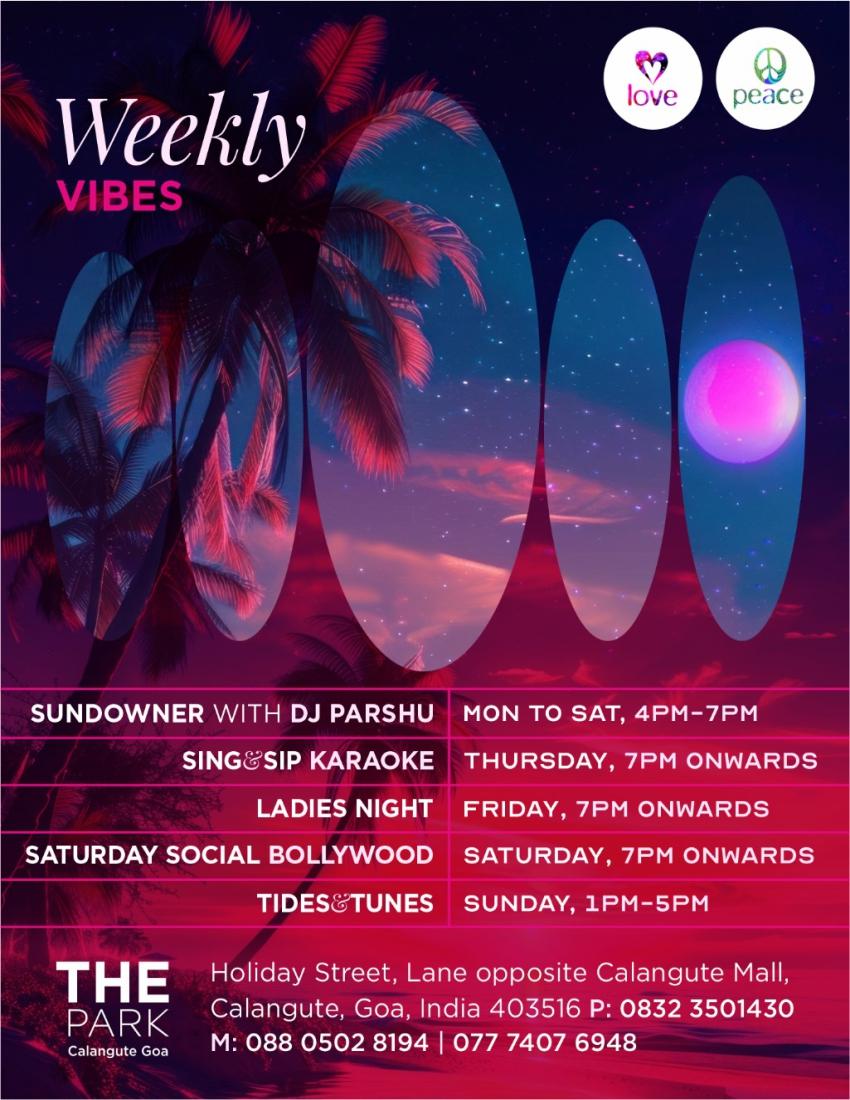
Foods That Power You Without Caffeine EATING FOR ENERGY
By Gauri Ghadge

BREAKING THE CAFFEINE LOOP
In our fast-paced world, where productivity often defines our self-worth, it's no surprise that caffeine has become a crutch for millions. The morning coffee, the post-lunch espresso, and even the energy drink before a late-night task, these have become rituals for staying alert. But what if there’s a better, more sustainable way to feel energised?
The truth is, caffeine only masks fatigue; it doesn’t cure it. It spikes cortisol, disrupts sleep, and can lead to dependency. If you're looking to break free from the rollercoaster of highs and crashes, food might be your best ally. This article explores nutrient-dense, energysustaining foods backed by science, the kind t h a t h e l p y o u s t a y v i b r a n t w i t h o u t overstimulation.
Let’s dive into the world of natural energy boosters, no caffeine required.
1.
COMPLEX CARBOHYDRATES: THE BODY’S PREFERRED FUEL
Carbohydrates have long been demonised by fad diets, but in reality, they are the body’s most efficient energy source, especially complex carbs.
Unlike simple sugars, which spike blood glucose and crash quickly, complex carbs are digested slowly, providing a steady release of energy.
Top Picks:
Ÿ Oats: Rich in beta-glucan and fibre, oats stabilise blood sugar and keep you full longer. A study in the Appetite Journal (2015) found that oats enhance satiety and sustained energy in the morning compared to processed cereals.
Ÿ Sweet Potatoes: Packed with fibre, vitamins A and C, and slow-burning starch, they deliver energy without the crash.

Ÿ Quinoa: A complete protein and complex carb in one, making it a powerhouse for sustained stamina.
Ÿ Pro Tip: Combine complex carbs with a bit of protein or healthy fat to prevent insulin spikes.
2. IRON-RICH FOODS: OXYGEN = ENERGY
If you often feel sluggish despite sleeping well, you might be low on iron, the mineral that helps transport oxygen to your cells. Without it, even breathing can feel like a chore.
Top Picks:
Ÿ Lentils: Affordable, versatile, and one of the richest plantbased iron sources. Combine with vitamin C (like lemon juice or tomatoes) for better absorption.
Ÿ Pumpkin Seeds: A handful provides nearly 15% of daily iron needs, along with magnesium and zinc.
Ÿ Dark Leafy Greens (Spinach, Kale): While not as bioavailable as animal sources, they’re still a potent part of an iron-rich diet.
Ÿ Fact: The World Health Organisation reports iron deficiency as the most common nutritional deficiency worldwide, especially among women.
3. HEALTHY FATS: SLOW-BURNING, LONG-LASTING FUEL
Fats are the slow-burn logs to your metabolic fire. They don’t give a sudden rush, but rather a prolonged sense of alertness and satiety.
Top Picks:
Ÿ Avocados: High in monounsaturated fats and B vitamins, they help regulate blood sugar and support neurotransmitter function.
Ÿ Nuts and Seeds: Almonds, walnuts, chia, and flaxseeds provide essential omega-3s, magnesium, and protein.
Ÿ Olive Oil: Apart from being heart-healthy, it helps in the slow release of energy during digestion.
A study published in the American Journal of Clinical Nutrition
FOOD & HEALTH
(2021) showed that diets high in unsaturated fats led to better endurance and mental clarity.
4. HYDRATION HEROES: WATER + ELECTROLYTE BALANCE
Dehydration is a silent energy thief. Just a 1–2% loss of body water can impair cognitive function and make you feel tired, irritable, and dizzy.
Top Picks:
Ÿ Coconut Water: Naturally rich in potassium and magnesium, a great natural electrolyte drink.
Ÿ Water-Rich Fruits: Watermelon, oranges, cucumber, and strawberries not only hydrate but also provide fibre and vitamins.
Ÿ Herbal Teas: Especially ginseng, ginger, and lemon balm, they calm and energise without the caffeine.
Did you know? Fatigue is often the first symptom of dehydration. The European Journal of Clinical Nutrition suggests staying hydrated improves alertness and performance, especially in hot climates.
5. PROTEIN WITH PURPOSE: REPAIR + RECHARGE
Proteins are not just for muscle repair; they are key in enzyme production, neurotransmitter function, and stabilising blood sugar.
Top Picks:
Ÿ Greek Yogurt: Packed with probiotics, it improves gut health and is a complete protein.
Ÿ Eggs: A near-perfect protein, plus choline for brain function.
Ÿ Tofu/Tempeh: Excellent vegetarian sources of protein, iron, and calcium.
Tip: Pairing protein with fibre (e.g., tofu + whole grain rice) gives you lasting fuel throughout the day.
6. B-VITAMINS: THE SPARK PLUGS OF YOUR METABOLISM
These essential vitamins help convert food into usable energy and support your nervous system.
Top Picks:
Ÿ Bananas: High in B6 and natural sugars for quick but healthy energy.
Ÿ Whole Grains: Brown rice, barley, and millet are excellent B-complex sources.
Ÿ Sunflower Seeds: An underrated super snack rich in B1 (thiamine), which helps in energy metabolism.
Clinical Tip: A deficiency in B12 or folate is often mistaken for chronic fatigue or depression, especially in vegetarians.
7. MAGNESIUM: THE MUSCLE + MIND MINERAL
Magnesium plays a key role in energy production at the cellular level (ATP synthesis). Low levels can lead to constant fatigue and poor sleep.
Top Picks:
Ÿ Dark Chocolate (70%+): A natural mood booster and magnesium source.
Ÿ Spinach, Swiss Chard: Leafy greens loaded with magnesium and iron.
Ÿ Black Beans & Edamame: Combine protein + magnesium for a double win.
According to The Journal of Nutrition, over 50% of adults don’t
get enough magnesium, especially those under chronic stress.
8. ADAPTOGENS & HERBAL ALLIES: CALM ENERGY WITHOUT THE CRASH
Adaptogens are plant-based compounds that help the body adapt to stress and balance cortisol levels, promoting energy without overstimulation.
Top Picks:
Ÿ Ashwagandha: Reduces stress, supports stamina. Backed by several human studies.
Ÿ Rhodiola Rosea: Known to combat fatigue and improve mental performance.
Ÿ Maca Root: Believed to boost mood, endurance, and hormone balance.
Note: Always consult a healthcare professional before adding adaptogens, especially if pregnant or on medications.
9. THE ROLE OF BALANCED MEALS AND MEAL TIMING
Even the healthiest foods can lose their effect if eaten at the wrong time or in improper combinations.
Ÿ Eat Breakfast within 1–2 hours of waking. This helps kickstart metabolism and reduces mid-day energy dips.
Ÿ Avoid sugar-loaded snacks, they spike and crash energy.
Ÿ Adopt small, frequent meals if you feel sluggish postmeal. Heavy meals can divert blood to digestion and make you feel drowsy.
Balanced Plate Formula: 50% vegetables + 25% lean protein + 25% complex carbs + healthy fats.
10. FOODS TO AVOID FOR SUSTAINED ENERGY
To feel truly energised throughout the day, it’s just as important to reduce foods that sabotage your energy.
Ÿ Refined Sugar: Causes rapid glucose spikes followed by crashes.
Ÿ Caffeinated Energy Drinks: Often packed with sugar and artificial stimulants.
Ÿ White Flour Products: Low fibre, high glycemic index , leads to fatigue.
Ÿ Alcohol: Depletes nutrients, causes dehydration, and disrupts sleep.
Ÿ Ultra-Processed Snacks: Poor nutrient profile and digestive stress.
ENERGY ROOTED IN REAL FOOD
Energy doesn't need to come in a cup. Nature has already packed everything you need into whole foods, vibrant fruits, protein-rich legumes, leafy greens, healthy fats, and hydrating plants. Unlike caffeine, these foods don’t rob you of sleep, spike your cortisol, or lead to dependency.
They nourish your cells, stabilise your blood sugar, enhance your focus, and support long-term vitality. And that’s the kind of energy that matters; not just to get through the day, but to live it fully.
So next time you reach for that third coffee, try a banana-chia smoothie, a quinoa bowl, or a handful of pumpkin seeds. Your body (and brain) will thank you.




How to Spot Them, and Why You Should Care ULTRA-PROCESSED FOODS
By Gauri Ghadge


THE SILENT INVASION ON OUR PLATES
They look delicious. They're convenient. They're everywhere. But beneath their shiny packaging and seductive flavours, ultra-processed foods (UPFs) are wreaking havoc on global health. From breakfast cereals to packaged snacks, from soft drinks to frozen meals, these products now make up more than 50% of daily caloric intake in many modern diets. Yet most consumers can’t even define what “ultra-processed” really means.
This article takes a deep dive into what ultra-processed foods are, how to spot them, and most importantly, why you should care. With compelling science, global data, and practical guidance, we expose the truth about these modern-day dietary disruptors.
WHAT ARE ULTRA-PROCESSED FOODS, REALLY?
The term "ultra-processed food" isn’t a buzzword; it’s a scientifically recognised classification, part of the NOVA food classification system, developed by Brazilian nutrition researcher Carlos Monteiro and adopted globally by institutions like the World Health Organisation (WHO) and the United Nations Food and Agriculture Organisation (FAO). According to NOVA, ultra-processed foods are industrial formulations typically made with five or more ingredients, including additives not commonly found in home kitchens.
These may include:
Ÿ Artificial flavours and colours
Ÿ Emulsifiers, thickeners, and stabilizers
Ÿ Preservatives
Ÿ High-fructose corn syrup and maltodextrin
Ÿ Industrial oils (hydrogenated or interesterified fats)
They are designed to be hyper-palatable, long-lasting, and convenient, but often lack meaningful nutritional value.
Key Insight: Just because something is vegetarian or labelled “low-fat” doesn’t mean it isn’t ultra-processed. Many healthbranded snacks and beverages still fall into the UPF category.
HOW TO SPOT ULTRA-PROCESSED FOODS IN THE WILD
Identifying UPFs can be tricky because marketing often masks them under buzzwords like “healthy,” “natural,” or “organic.”
Here’s how to decode them:
Look at the Ingredient List:
Ÿ If it contains more than 5 ingredients, especially those with unfamiliar chemical names, it’s likely ultra-processed.
Ÿ If it includes additives, colours, artificial sweeteners, or enhancers, it fits the UPF category.
Ÿ If it contains isolated nutrients (like whey protein isolate or soy protein concentrate), rather than whole food components, that’s a red flag.
Examples of Common Ultra-Processed Foods:
Ÿ Packaged breakfast cereals (e.g., sugary corn flakes)
Ÿ Flavoured yogurts with thickeners and artificial fruit
Ÿ Instant noodles, pasta sauces, ready-to-eat gravies
Ÿ Frozen nuggets, processed meat slices
Ÿ Diet sodas, bottled iced teas, and energy drinks
Ÿ Protein bars, snack cakes, sweetened nut butters
FOOD & HEALTH
Scientific Backing: A 2019 study published in BMJ found that a 10% increase in ultra-processed food intake was associated with a 14% higher risk of all-cause mortality.
THE REAL HEALTH RISKS OF ULTRA-PROCESSED FOODS
Consuming UPFs regularly is not just about empty calories; it’s about ingesting substances that disrupt metabolism, gut health, and hormone balance.
1. Obesity & Weight Gain
Ÿ UPFs are energy-dense but low in fibre and protein, making them easy to overconsume.
Ÿ A landmark clinical trial by the NIH (2019) showed that people consuming an ultra-processed diet ate ~500 extra calories/day and gained weight compared to those on a minimally processed diet, even when both were matched for calories and nutrients.
2. Diabetes & Insulin Resistance
Ÿ Many UPFs are high in refined sugars and low in complex carbs, leading to sharp blood glucose spikes.
Ÿ A study in Diabetologia (2020) linked high UPF consumption to a 38% increased risk of developing type 2 diabetes.
3. Mental Health Concerns
Ÿ Emerging evidence links UPFs to depression and anxiety, likely due to inflammation, gut microbiome disruption, and blood sugar instability.
Ÿ A 2022 study published in Public Health Nutrition found high UPF intake correlated with a 22% increased risk of depressive symptoms.
4. Cardiovascular Disease
Ÿ UPFs often contain trans fats, refined sodium, and preservatives like phosphates, all of which are risk factors for heart disease.
Ÿ A 2021 cohort study in the Journal of the American College of Cardiology (JACC) found that higher UPF intake was associated with increased risk of hypertension and stroke.
WHY ARE ULTRA-PROCESSED FOODS SO ADDICTIVE?
You’re not imagining it, these foods are engineered to hijack your brain.
UPFs are carefully designed with just the right balance of sugar, fat, and salt, a combination referred to as the "bliss point." This optimizes dopamine release, the same chemical triggered by addictive substances.
Quote from Dr. Kevin Hall (NIH researcher):
“Ultra-processed foods are formulated to be consumed quickly and in large amounts, it’s not a bug, it’s a feature.”
This is why you might polish off an entire bag of chips or cookies without feeling full, but not a bowl of boiled lentils or raw carrots.
BUT AREN’T SOME PROCESSED FOODS OKAY?
Yes. Not all processed foods are bad.
The NOVA classification defines four categories:
Ÿ Unprocessed or minimally processed foods (e.g., fruits, vegetables, eggs, milk)
Ÿ Processed culinary ingredients (e.g., oils, salt, sugar, extracted from natural foods)
Ÿ Processed foods (e g , canned veggies, sourdough bread, cheese)
Ÿ Ultra-processed foods (e g , flavoured chips, soda, packaged pastries)
Key Takeaway: Processing per se is not the issue; it’s the ultra-processing involving chemical manipulation and loss of natural food structure.
HOW TO REDUCE ULTRA-PROCESSED FOODS IN YOUR DIET
Reclaiming your plate doesn’t mean giving up convenience; it means making smarter swaps and becoming label-literate.
Practical Swaps:
Instead of flavoured yogurt Try plain Greek yogurt with fresh fruit.
Ÿ Instead of boxed cereal, Opt for oats or homemade granola.
Ÿ Instead of instant noodles, Try whole wheat noodles with homemade broth.
Ÿ Instead of soda Go for lemon water, coconut water, or herbal teas.
Ÿ Instead of protein bars, Eat a banana with peanut butter or boiled eggs.
Batch Cooking Tips:
Ÿ Prep overnight oats, chopped vegetables, and lentils on weekends.
Ÿ Invest in a blender and slow cooker, and homemade hummus, soups, and dips go a long way.
Build Food Literacy:
Ÿ Learn to read ingredient labels, not just nutrition facts.
Ÿ Avoid packages where sugar, corn syrup, or vegetable oils are among the first 3 ingredients.
GLOBAL PERSPECTIVE: IT’S NOT JUST PERSONAL, IT’S POLITICAL
Ultra-processed foods are not just a personal dietary choice; they’re a public health and policy issue.
Multinational corporations aggressively market UPFs in emerging economies, often replacing traditional diets with cheap, nutrient-poor alternatives.
According to the FAO and WHO, policies to reduce UPF consumption must include:
Ÿ Front-of-pack labeling
Ÿ Advertising restrictions (especially to children)
Ÿ Public education campaigns
Ÿ Fiscal policies (like sugar taxes)
Example: Chile’s 2016 food labelling law, one of the strictest in the world, led to a 23 7% decrease in sugary drink consumption in just 18 months.
WHY YOU SHOULD CARE, AND TAKE ACTION
Ultra-processed foods are designed to please your taste buds, not nourish your body.
Yes, they are cheap, accessible, and heavily marketed. But the cost we pay in the long run, through chronic diseases, mental health struggles, and rising healthcare burdens, is far higher. You don’t have to be perfect. You just need to be aware.
Start by reclaiming your plate, one ingredient, one label, one choice at a time.

SEASONAL OR SENSATIONAL
The War on All-Year Mangoes
By Gauri Ghadge
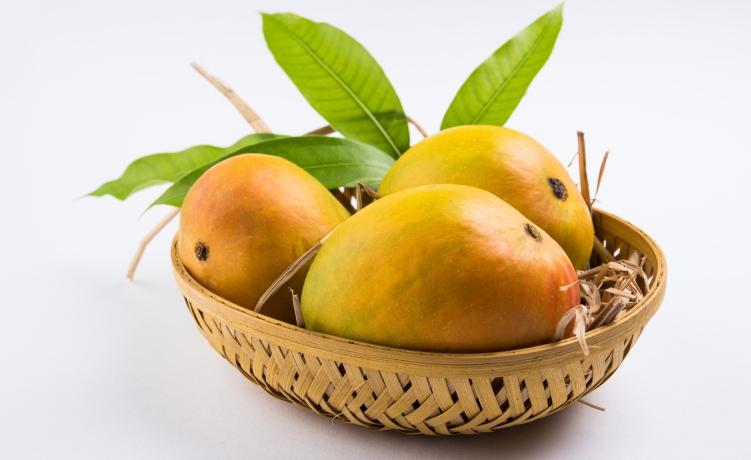
A culinary and environmental critique of off-season produce obsession,andapleaforeatingintunewithnature
THE SWEET SEDUCTION OF A MANGO IN DECEMBER
There’s something poetic about biting into a ripe Goan mango in May, sun-warmed, juice-laden, and brimming with the taste of a season. For generations, mangoes have marked a turning point in Goa’s calendar: a signal of summer, family recipes,
and monsoon anticipation. But today, mangoes, once fleeting and special, are available in supermarkets nearly all year round.
Alphonsos in January, Totapuris in October, and even imported Peruvian mangoes in December now grace shelves across India. This year-round indulgence may feel like progress, but behind it lies a complex and troubling story of carbon emissions, water stress, degraded taste, and a disappearing

sense of seasonality.
CARBON FOOTPRINT: THE HIDDEN COST OF OFF-SEASON
FRUIT
Few realise how far an off-season mango travels. According to industry data, air-freighted mangoes from Peru to Europe generate up to 6 kg of CO2 per kilogram of fruit, comparable to emissions from pork production By comparison, mangoes shipped by sea emit around 30 times less CO , but still more than local, seasonal alternatives. Even within India, mangoes often travel long distances via refrigerated trucks, adding to their environmental burden. According to CarbonCloud, transport accounts for about 18% of a mango ' s total carbon footprint, while agriculture, including fertiliser, water, and pesticide use, contributes about 79%.
The further a mango strays from its natural time and place, the more it costs, not just in rupees, but in resource depletion and climate impact.
WATER WASTE AND AGROCHEMICAL REALITY
Mangoes may rank among the “clean fifteen” for pesticide residues due to their thick skins, but their environmental footprint is far from light. The water required to grow a kilogram of mango ranges from 1,000 to 2,500 litres, depending on the region and technique. In Australia, the figure can reach over 5,200 litres/kg. India averages around 1,200 to 1,800 litres, according to the Water Footprint Network. Additionally, mango cultivation often involves heavy nitrogenbased fertiliser use, which contributes to nitrous oxide emissions an especially potent greenhouse gas These agrochemicals also contaminate soil and water, affecting biodiversity and long-term agricultural health.
PACKAGING, WASTE, AND METHANE EMISSIONS
Off-season mangoes are commonly wrapped in non-
recyclable plastic foam nets or shipped in waxed cardboard boxes, packaging that frequently ends up in landfills. Mango pits and peels, if not composted properly, contribute to methane emissions, a greenhouse gas over 25 times more potent than CO2�.
In a world where one-third of all food produced is wasted, and much of it in the post-harvest phase, adding packaging and cold storage infrastructure for mangoes outside their season only worsens the ecological toll.
NUTRIENT AND FLAVOUR LOSS IN OFF-SEASON MANGOES
While out-of-season mangoes may look enticing, they often fall short on taste and nutrition. When harvested prematurely and ripened using ethylene gas or in cold chambers, mangoes lack the complex sugars, volatiles, and enzymes that develop only on the tree.
Nutritionally, mangoes are at their peak when tree-ripened in season, rich in vitamin C, beta-carotene, and polyphenols. But nutrient degradation begins as soon as the fruit is picked. According to food science consensus, the longer the delay before consumption—especially with long-distance shipping and cold storage, the more nutrients are lost.
From an Ayurvedic perspective, seasonal eating is foundational to health. Mangoes, with their cooling and digestive qualities, are ideal in summer Out-of-season consumption, especially in colder months, can disrupt digestion and body balance.
GOA’S MANGO CULTURE: A SEASON, NOT A SHELF LIFE
In Goa, mangoes are not just fruit; they are heritage. Dishes like Mango Sasav, Uddamethi, and Aamras are culinary rituals that mark the summer’s arrival. Each year, locals await the first Alphonso or Mancurad with almost spiritual reverence. Making mangoes available year-round strips them of this context. It transforms a once-cherished harvest into just

another commodity. The anticipation is gone. So is the celebration.
Moreover, this shift has consequences for Goa’s small farmers. Many rely on traditional, seasonal cycles for harvesting. But rising demand for off-season mangoes, both within India and internationally- pushes some growers to adopt intensive methods, including chemical-assisted flowering and pruning stress techniques to manipulate crop cycles. While such techniques are recognised in horticulture, they can reduce tree longevity, affect soil health, and lead to monoculture practices that threaten biodiversity.
GLOBAL CRAVINGS, LOCAL IMPACT
Driven by global demand, the mango industry has rapidly industrialised. Export volumes continue to rise, with countries like Mexico, Peru, and India competing for market share. But the push for year-round supply creates unintended consequences: higher emissions, land degradation, increased waste, and erosion of cultural food identities.
In a state like Goa, rich in biodiversity and culinary tradition, embracing this industrial rhythm comes at a steep cost.
WHY SEASONALITY STILL MATTERS
Choosing to eat mangoes only during their natural season, from April to July in India, is not deprivation. It is restoration. Here’s why:
Ÿ Better Taste: Nothing compares to a tree-ripened Alphonso in May; syrupy, fragrant, and complex.
Ÿ Greater Nutrient Value: Naturally ripened fruits have higher vitamin and enzyme levels.
Ÿ Lower Emissions: Shorter transport and no cold storage
mean a smaller footprint.
Ÿ Economic Fairness: Seasonal buying supports local farmers without forcing them into ecologically risky practices.
Ÿ Less Waste: In-season produce has lower spoilage rates and less packaging waste.
THE HOSPITALITY INDUSTRY’S ROLE
Goa’s food and hospitality sector can lead the shift toward conscious consumption. Hotels, cafes, and restaurants can curate seasonal mango menus, spotlighting local varieties like Mancurad and Fernandin only when they are at their best.
Imagine a “Mango Month” on Goa’s tourism calendar: mangobased thalis, farm visits, tasting workshops, and limitededition desserts, all anchored in local, seasonal sourcing. It’s not just good ethics, it’s good business. Guests are increasingly looking for sustainability and authenticity, and there’s no better story to tell than one grown in your backyard.
CONCLUSION: LET THE MANGO BE A MOMENT
The war on all-year mangoes is not against the fruit; it’s against forgetting its story. A mango in December is a technical marvel, but a mango in May is a gift of nature. The former pleases the eye. The latter touches the soul.
In an age where everything is always available, choosing to eat seasonally is an act of wisdom. It brings back anticipation, reduces environmental damage, supports small farmers, and restores our connection with the land.
So let the mango be a moment, not a product on an endless shelf. Let Goa lead the way, one juicy bite at a time.









By Aditi Malhotra
Exploring East India, Chapter 5
In the Land of Festivals and Forests Offbeat Trails of Odisha

When you think of Odisha, what comes to mind is often Puri’s Jagannath Temple or the sun-kissed Konark Sun Temple. But this eastern state, nestled between the Bay of Bengal and the Eastern Ghats, has far more to offer than its iconic religious landmarks. Beyond the crowds and coastal bustle lies an Odisha that is untouched, soulful, and surprisingly serene. This is the Odisha of misty hills, hidden waterfalls, tribal villages, and sacred forests a place where tradition is not just preserved but lived, every single day. If you are looking for something different from your next travel experience, one that blends nature, spirituality, and quiet cultural richness, Odisha’s offbeat side will draw you in gently and stay with you long after.
DARINGBADI – ODISHA’S SECRET HILL STATION
Tucked away in the Kandhamal district, Daringbadi is often called the “Kashmir of Odisha,” though its charm is completely its own. At around 3,000 feet above sea level, the town offers cool temperatures,
pine forests, and coffee plantations that surprise most travellers. Unlike bustling hill stations in North India, Daringbadi remains relatively untouched, offering simple homestays, walking trails, and authentic tribal cuisine.
You can spend your mornings walking through spice gardens and coffee estates, and your evenings sipping on hot ginger tea under a sky full of stars. Local delicacies include dishes made with kandul dal and wild mushrooms, often served with rice or millet rotis.
SATKOSIA GORGE – NATURE’S DRAMATIC CANVAS
Satkosia Gorge is where the Mahanadi River carves a deep passage through the Eastern Ghats, creating one of the most stunning river gorges in India. This region is part of the Satkosia Tiger Reserve, a biodiversity haven that includes forests, grasslands, and rich river ecosystems. It is also home to mugger crocodiles, elephants, and rare bird species.
TRAVEL TALES

Eco-tourism here is thoughtfully managed. You can stay in forest camps by the river, go for a boat ride to spot gharials and river dolphins, or take a guided nature walk through sal and teak forests. The peaceful surroundings make it an ideal destination for nature lovers who prefer raw beauty over curated luxury.
KORAPUT – TRIBAL CULTURE AND SACRED GROVES
Far in the south-west corner of Odisha lies Koraput, a region known not for palaces or temples but for its living heritage. Home to several tribal communities like the Paraja, Bonda, and Gadaba, Koraput invites you to witness a way of life that has remained grounded for centuries.
Markets here are not just about commerce, they are gatherings of colour, language, and identity Weekly haats (markets) bring people from neighbouring villages dressed in traditional attire, selling handmade jewellery, millets, forest produce, and vibrant textiles.
You can also visit sacred groves and waterfalls like Duduma and Rani Duduma, and if you are lucky,
catch a tribal music and dance performance that happens with little fanfare but great spirit.
CHILIKA’S QUIET CORNERS – BEYOND THE BIRDS
While Chilika Lake is well known for birdwatching near Satapada, most travellers miss its quieter pockets. In areas like Mangalajodi, you can explore Odisha’s wetlands at their most peaceful. The villagers here have transformed from bird poachers to protectors, creating one of the most successful conservation stories in India. You can glide through the waters in a simple wooden boat, watching thousands of birds at sunrise, including flamingos, herons, and openbill storks. The experience is meditative and deeply moving.
HANDLOOMS, HANDICRAFTS, AND LOCAL FOOD
Everywhere you go in offbeat Odisha, you will encounter the state’s artistic soul—be it in Pipili’s appliqué work, Kotpad’s natural dye weaves, or Gopalpur’s tussar silk. These crafts are not just products, they are stories, stitched and dyed into everyday life.
Food in rural Odisha is simple, nourishing, and full of regional variety. You might eat pakhala bhat (fermented rice with curd), chhatu rai (mushroom mustard curry), or chakuli pitha (soft rice pancakes) made with love in a village kitchen. The use of local greens, roots, and spices is minimal but impactful, allowing each ingredient to shine.
FINAL THOUGHTS: ODISHA, GENTLY UNFOLDING
Odisha’s offbeat charm lies in its unhurried pace. There are no hard-sell attractions or commercial distractions. What you find instead is a deep, rooted sense of place—whether it is in a forest trail, a tribal melody, a cup of mountain-brewed coffee, or the quiet joy of discovering a new rhythm of life.
For those who seek meaning in their travels, Odisha is not just a destination, it is a reminder—that sometimes, the best journeys are the ones that whisper, not shout.



















































































